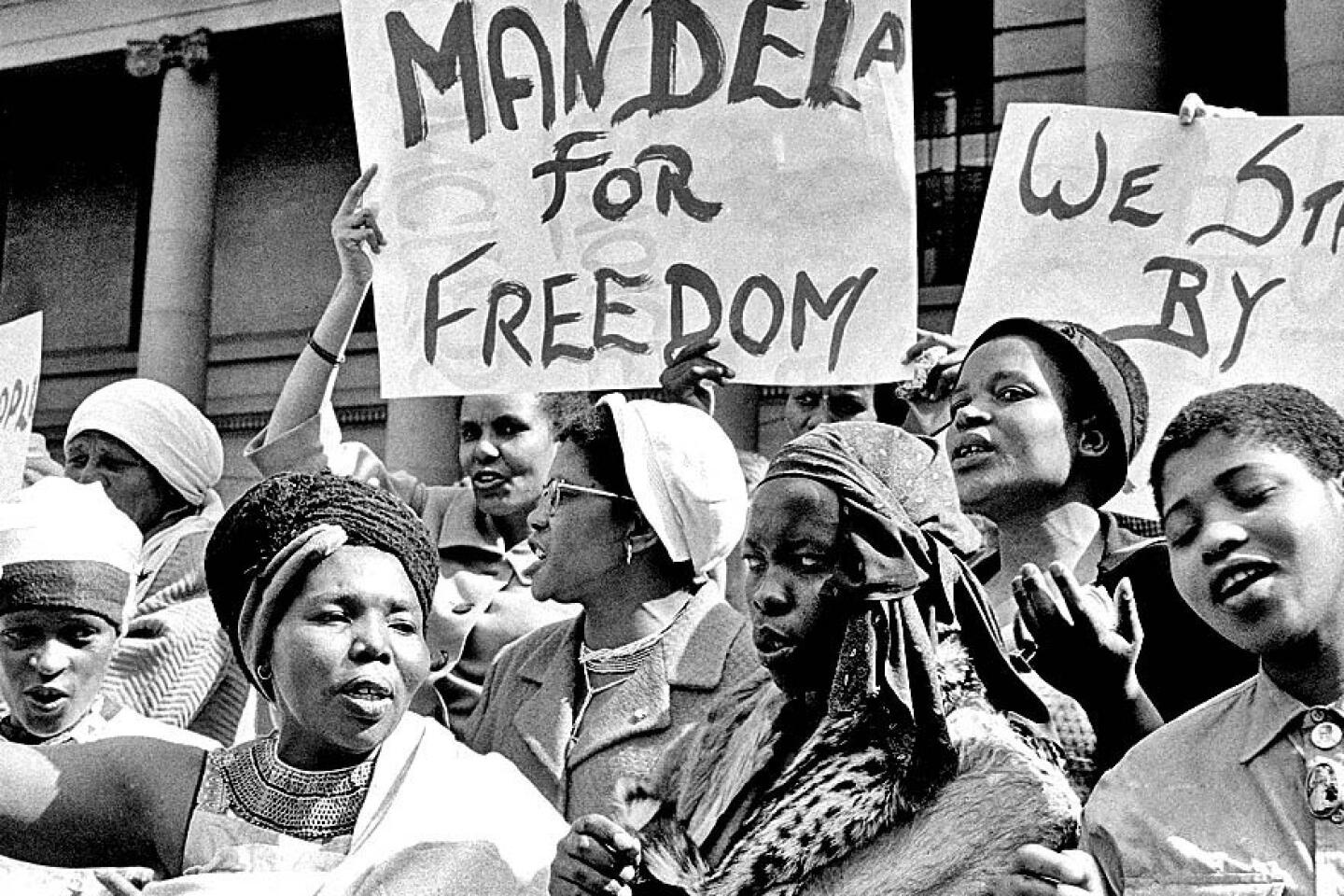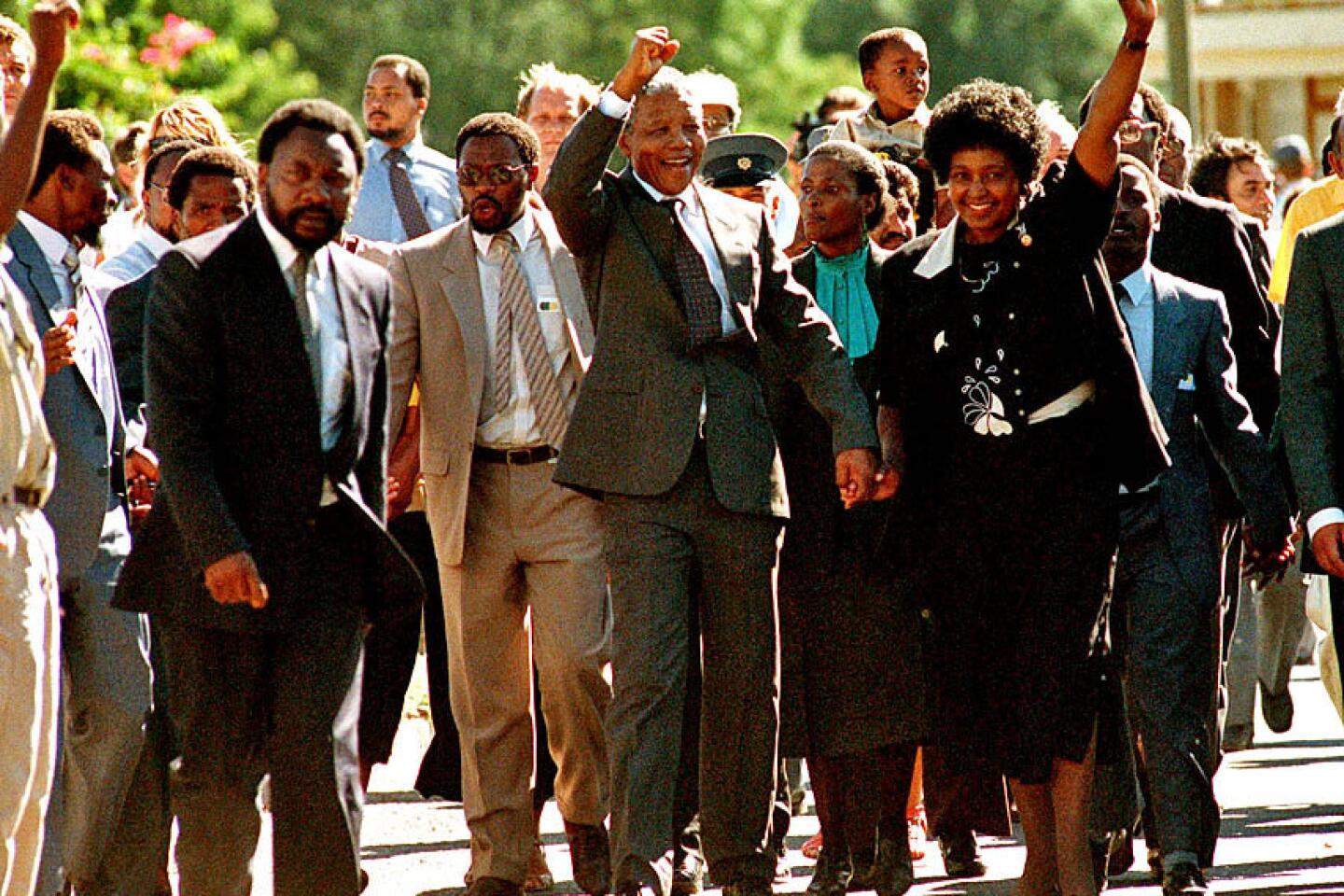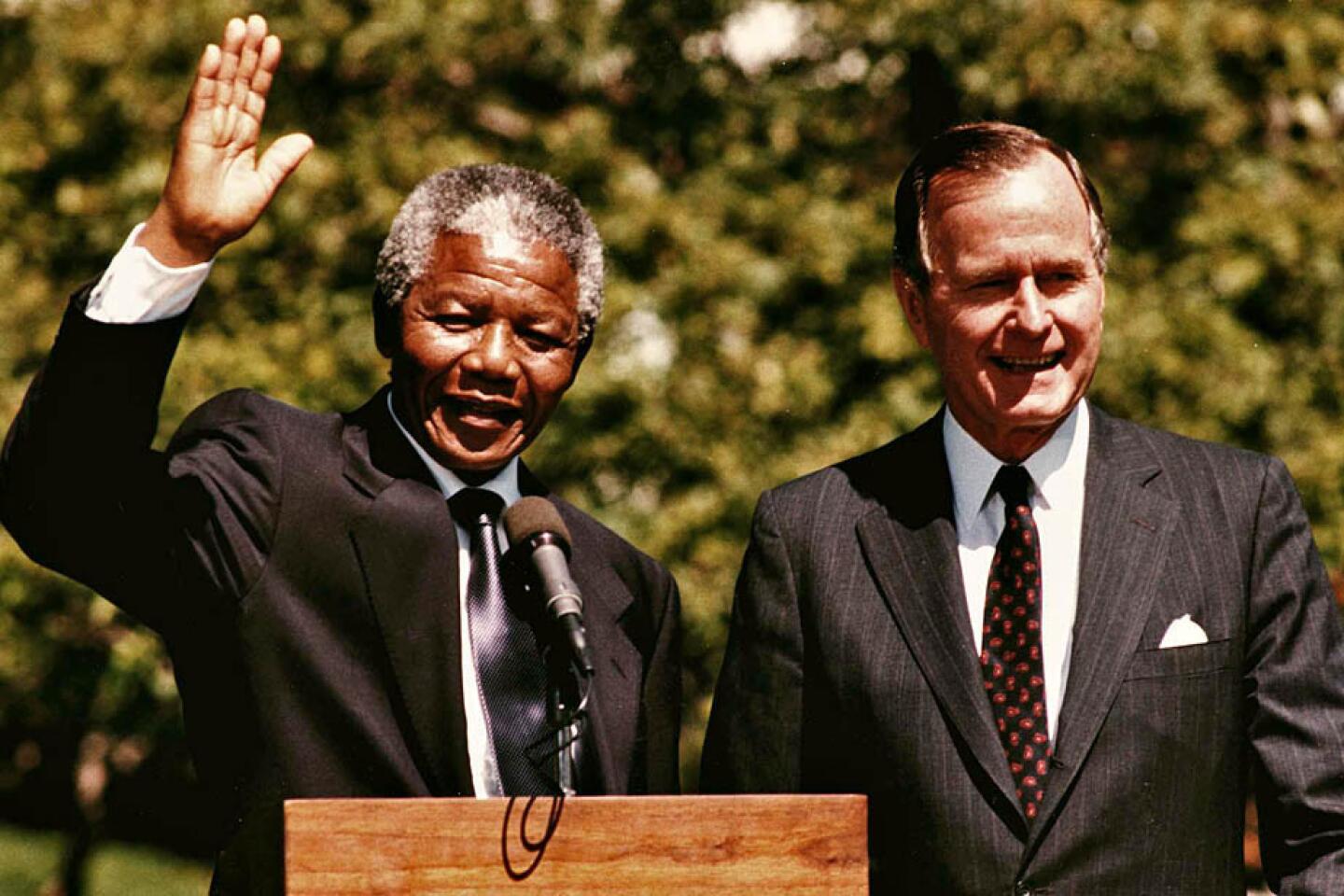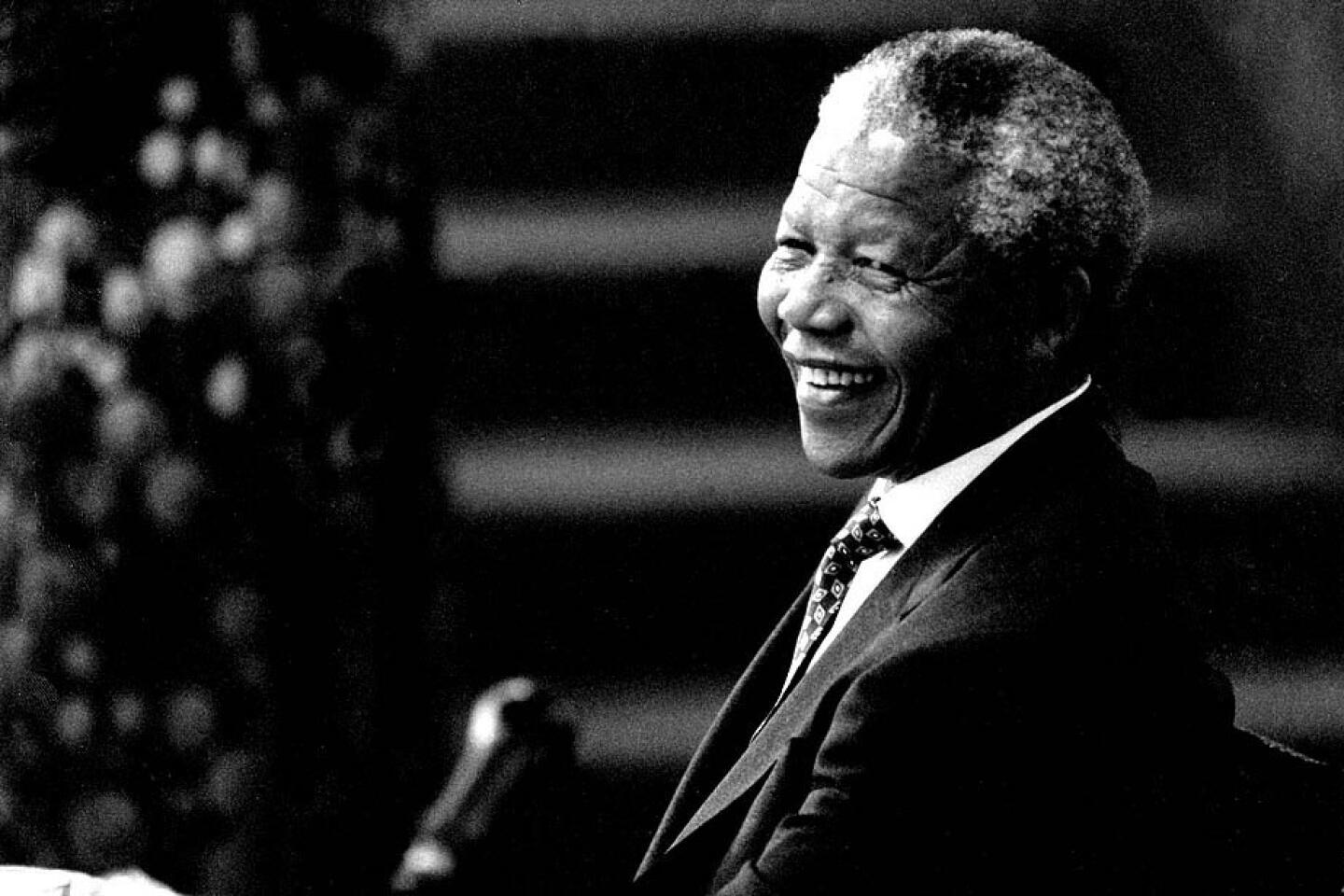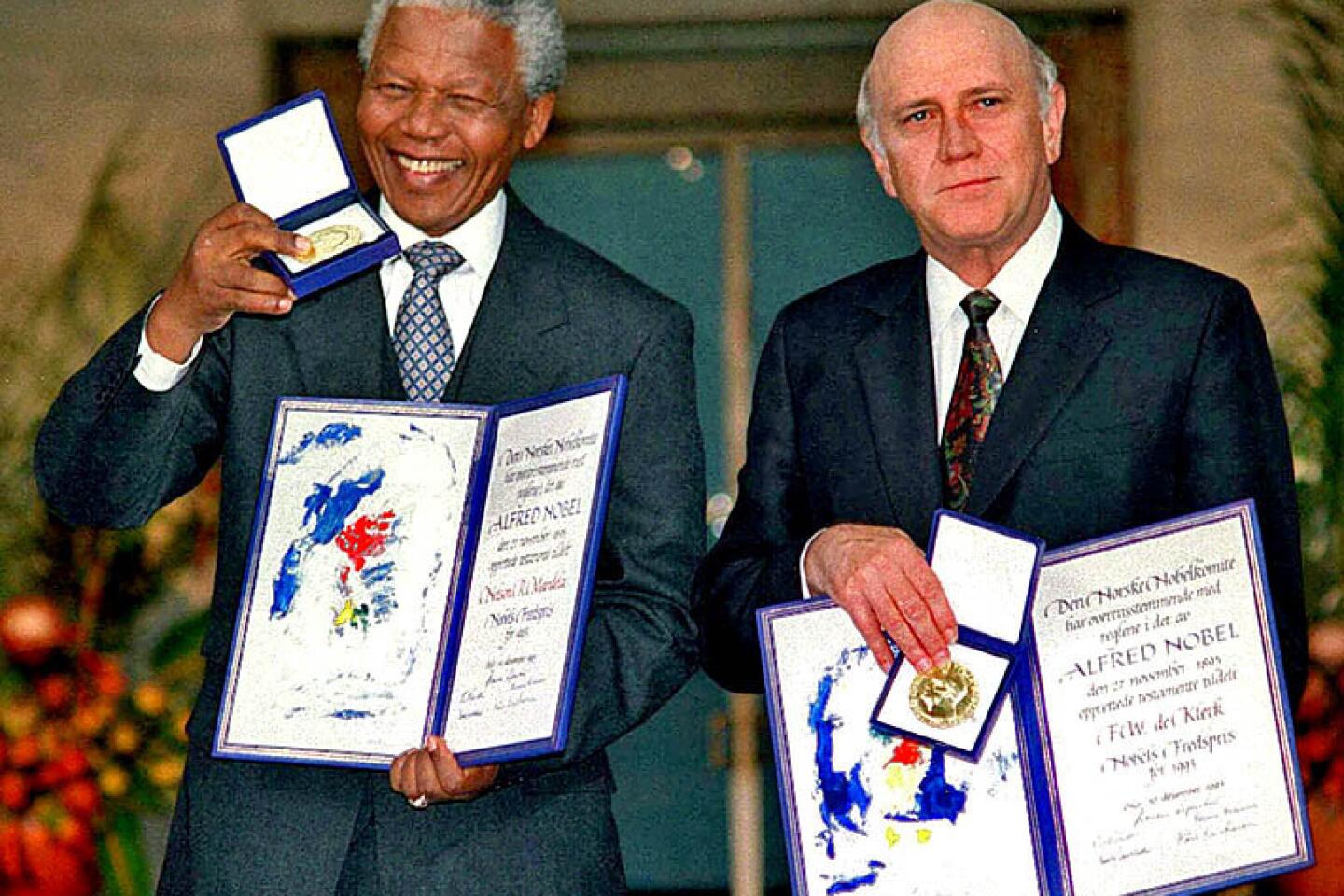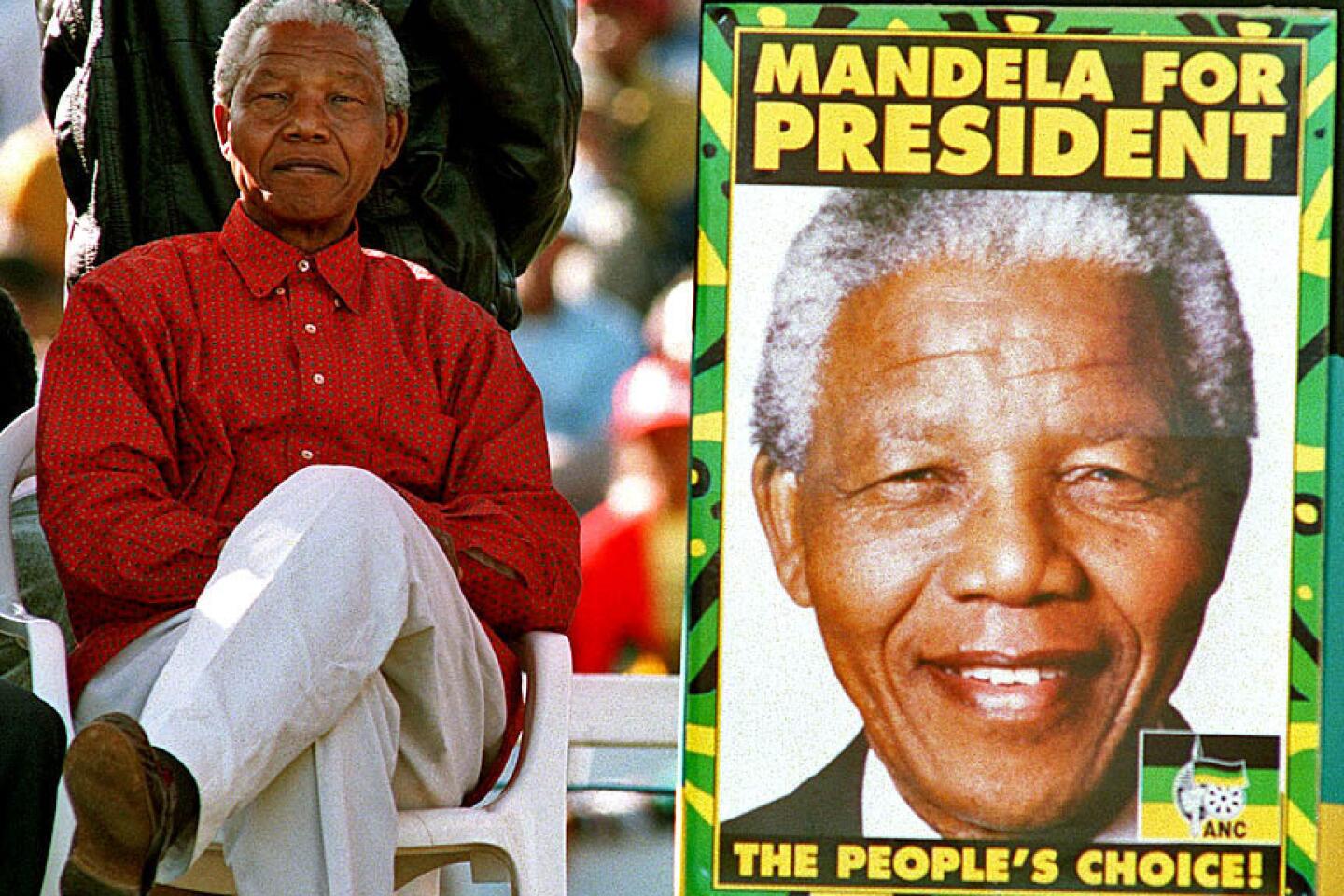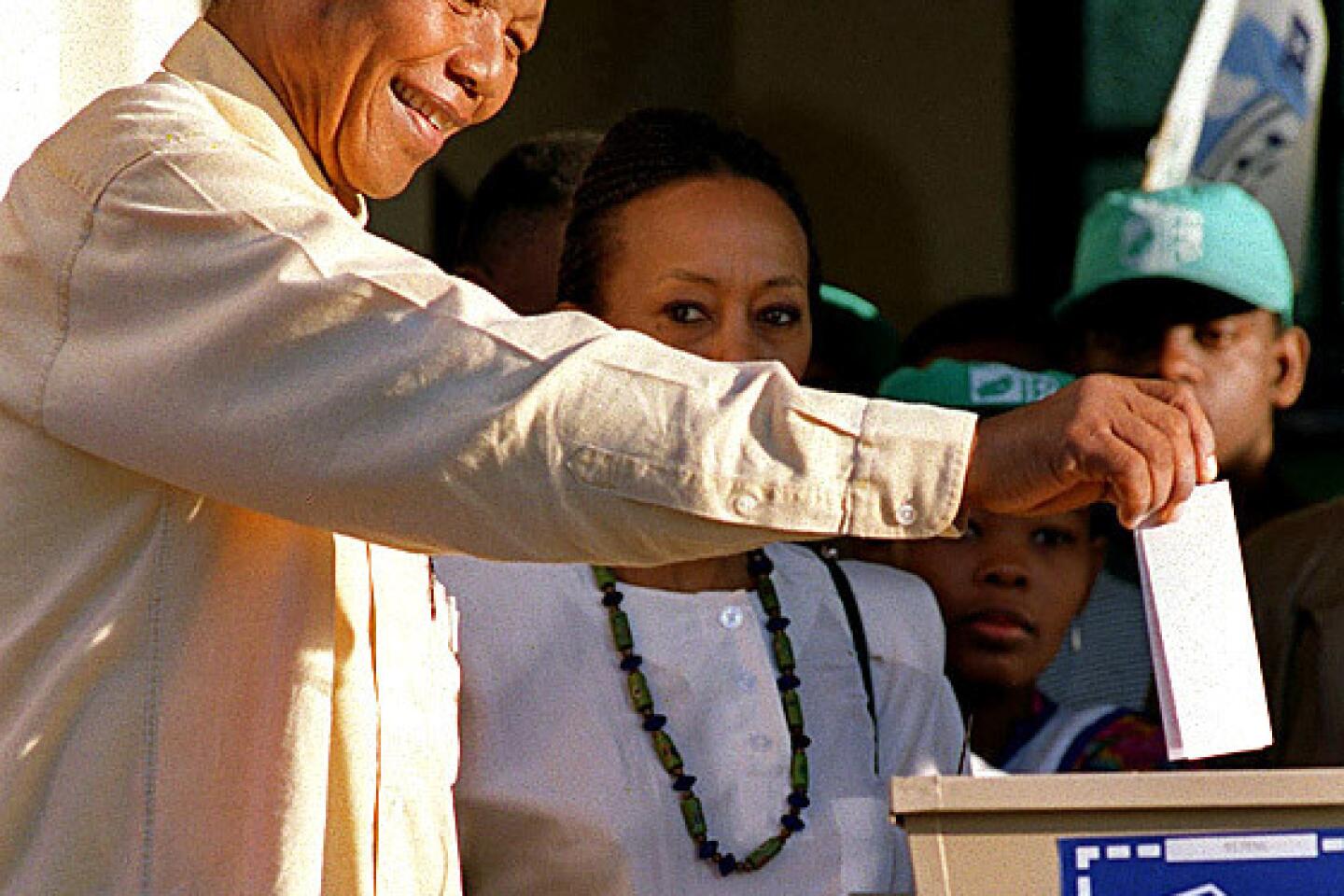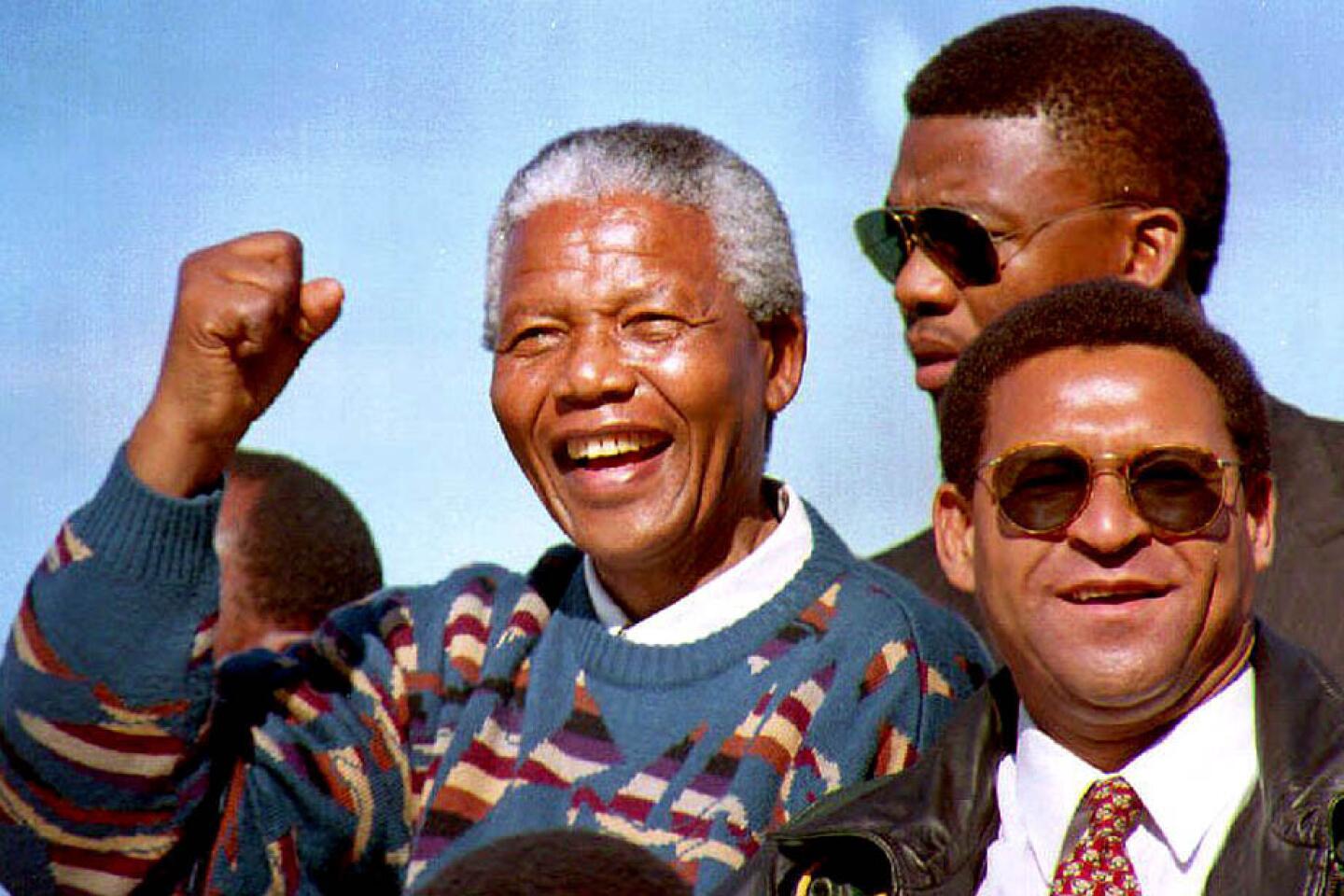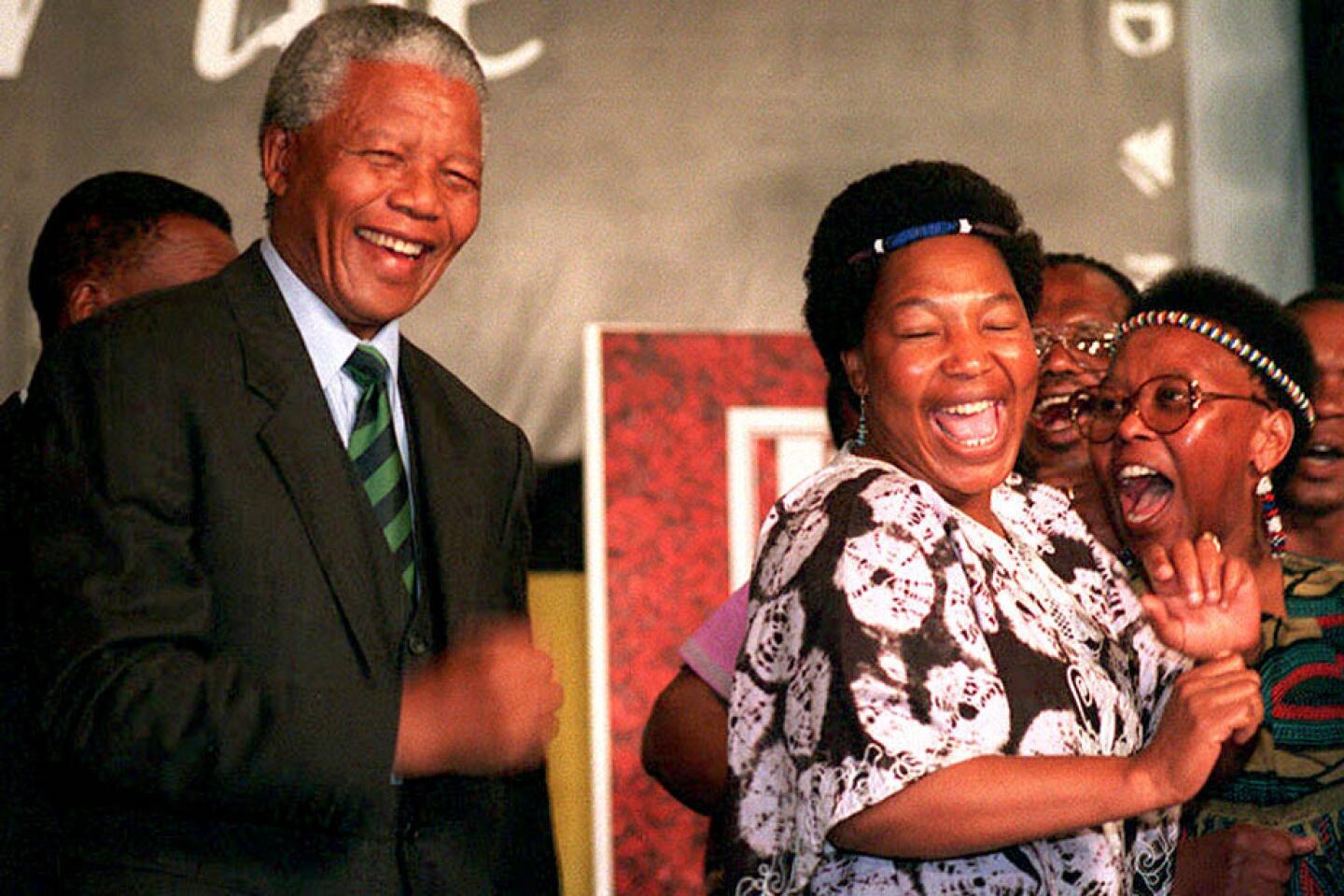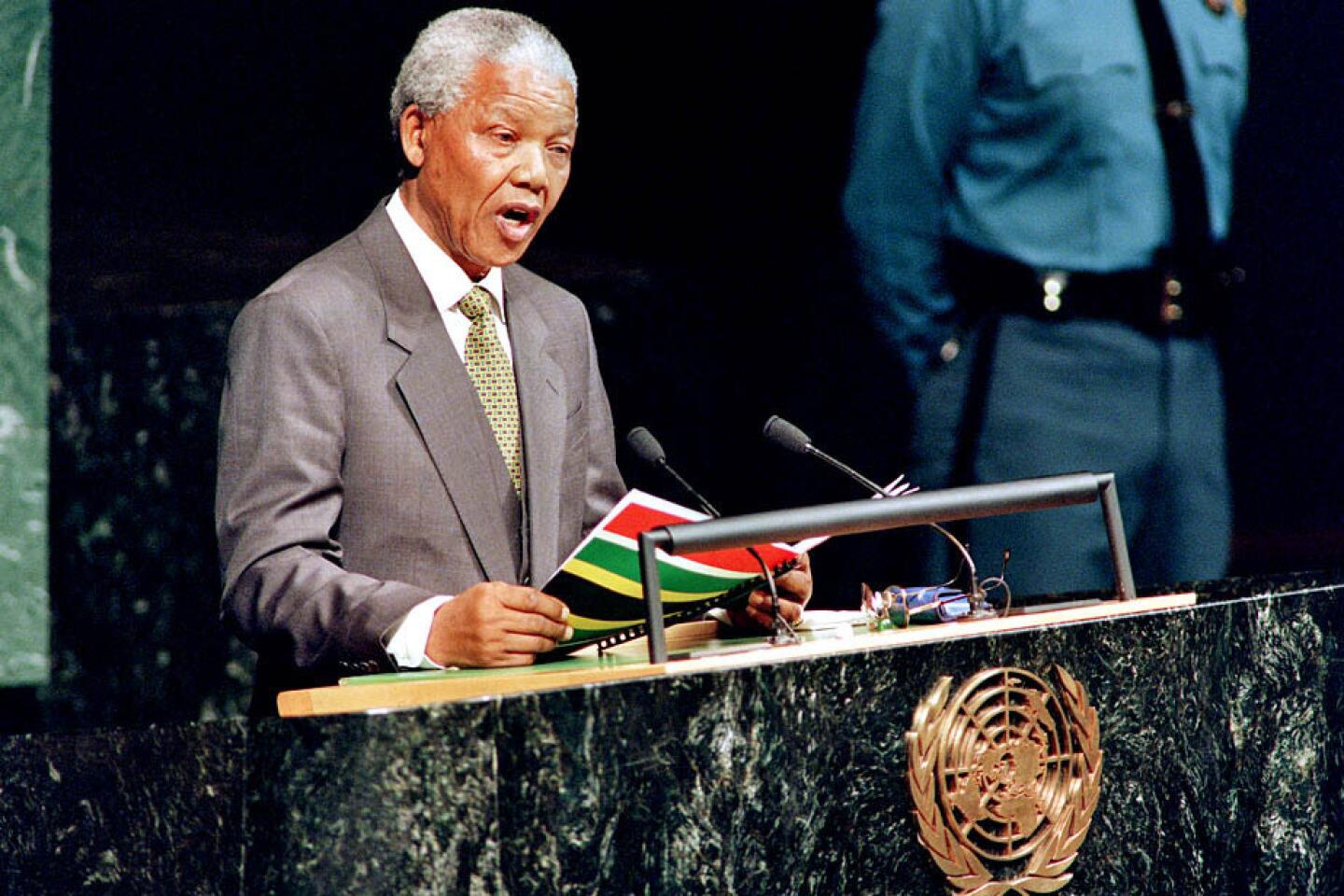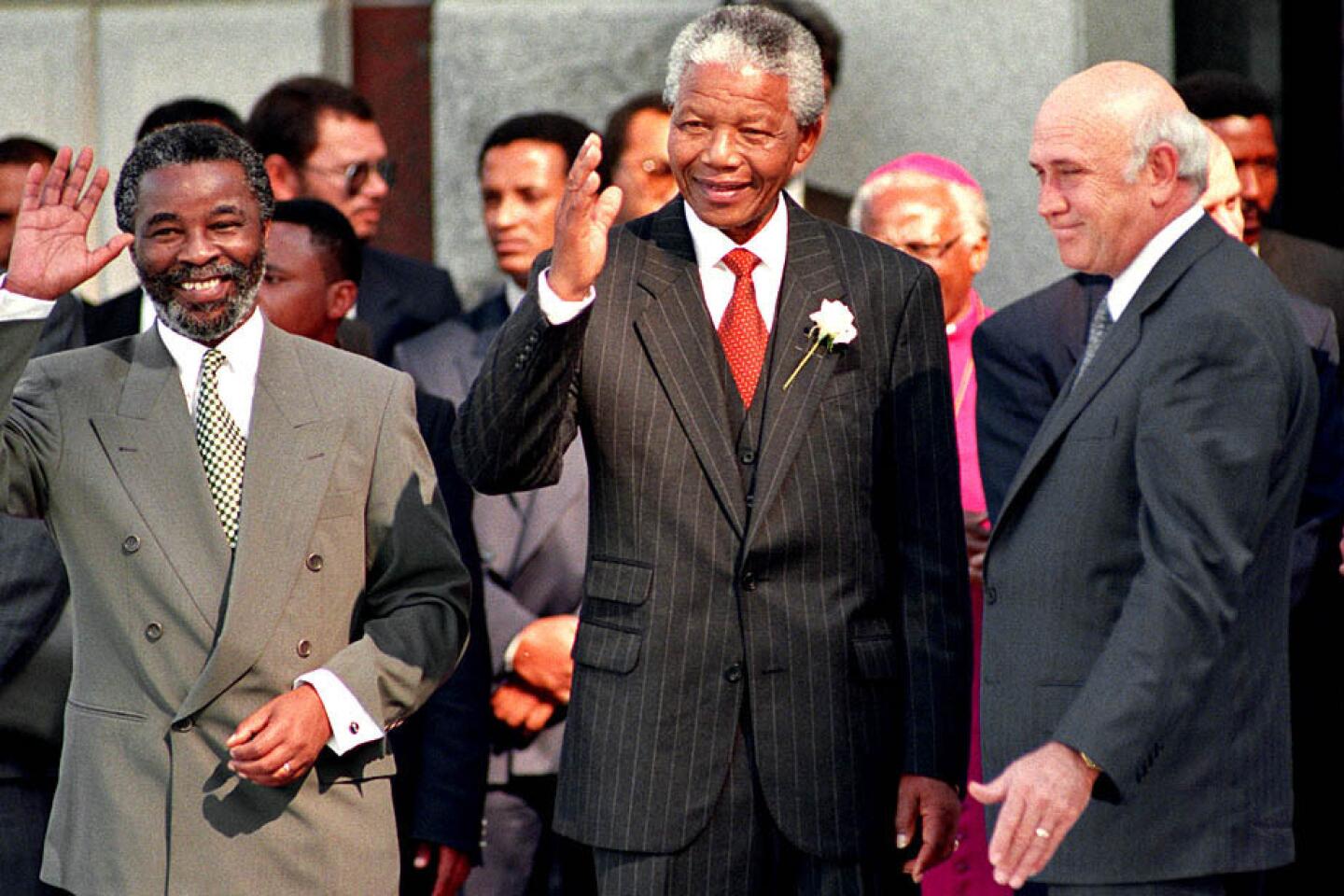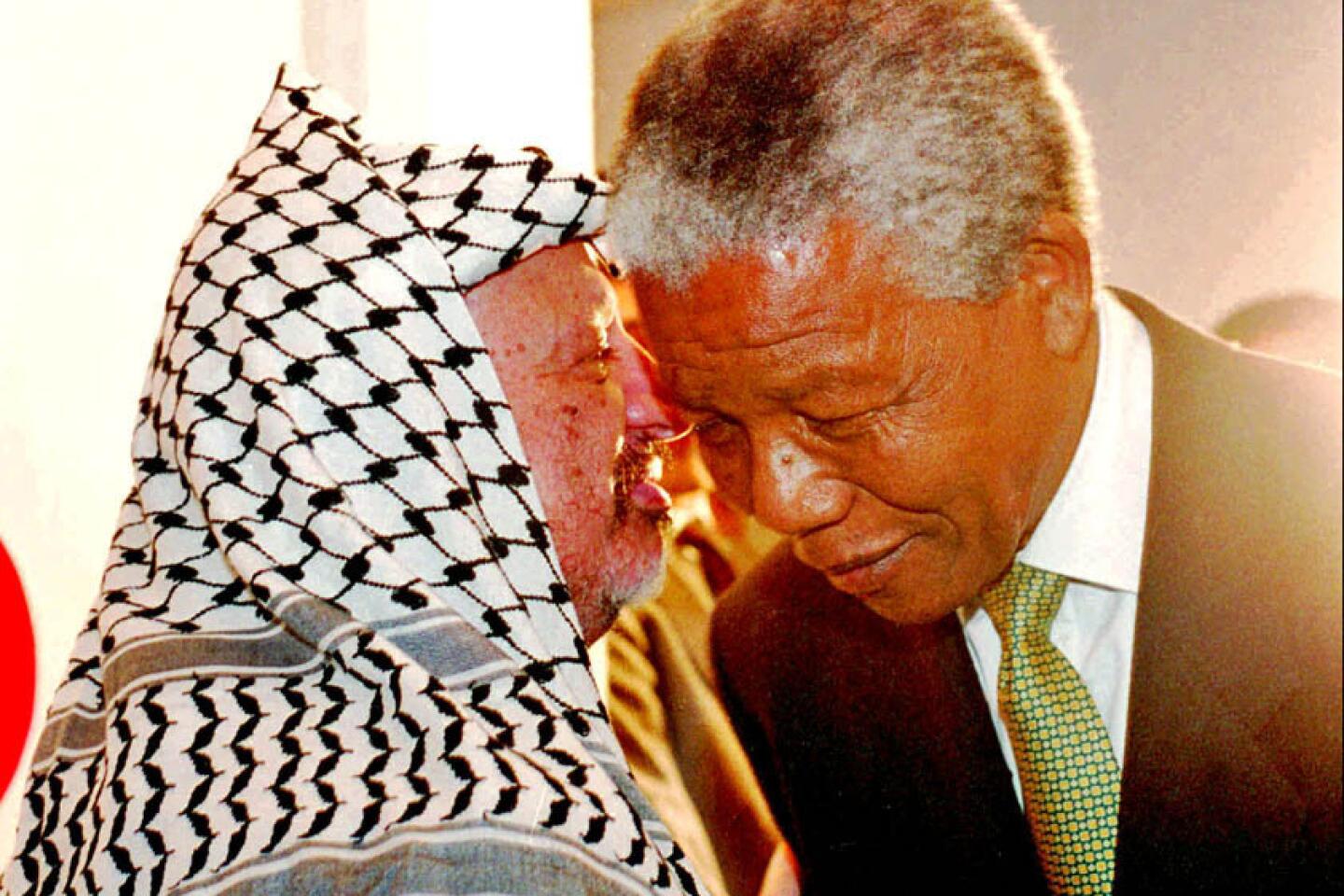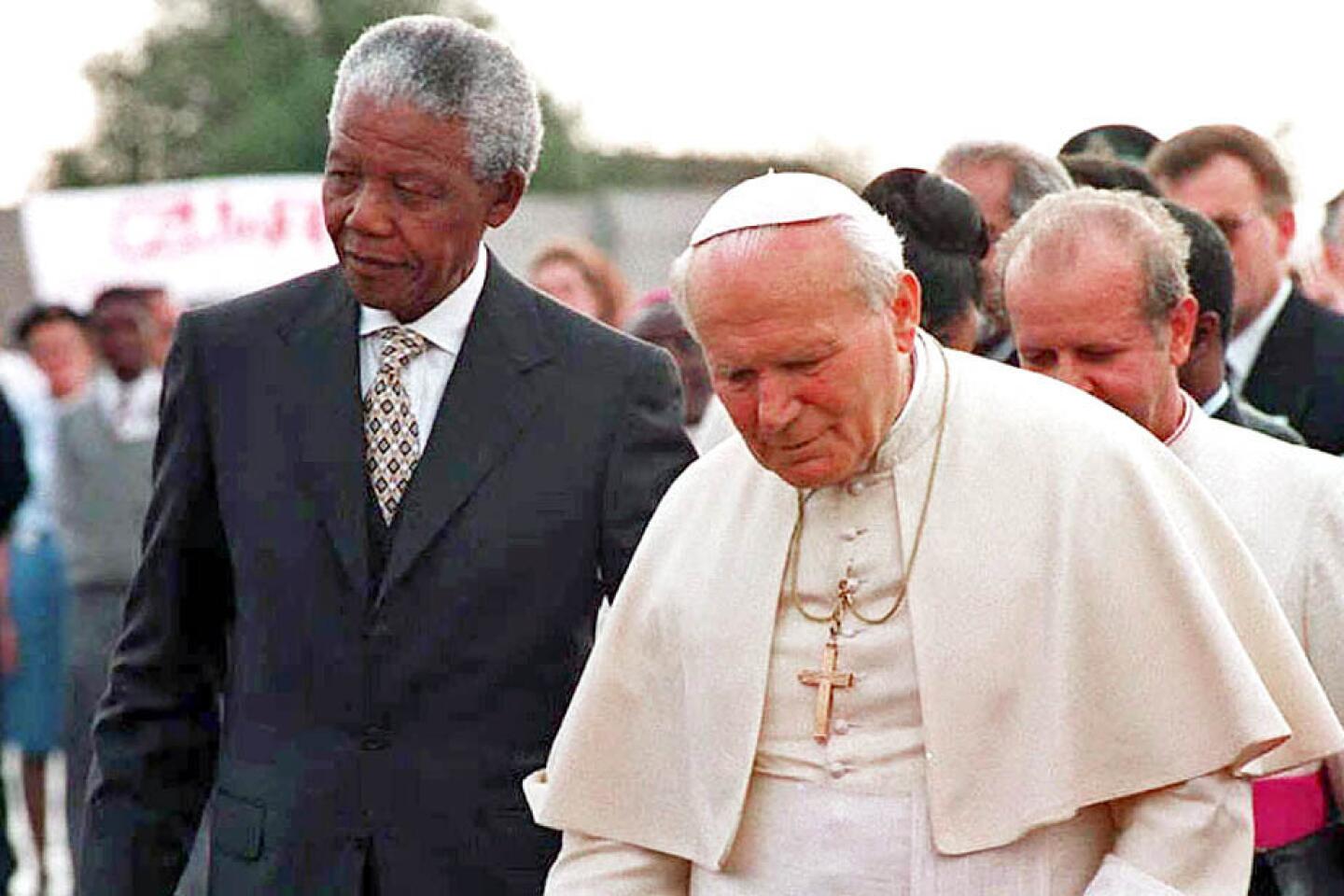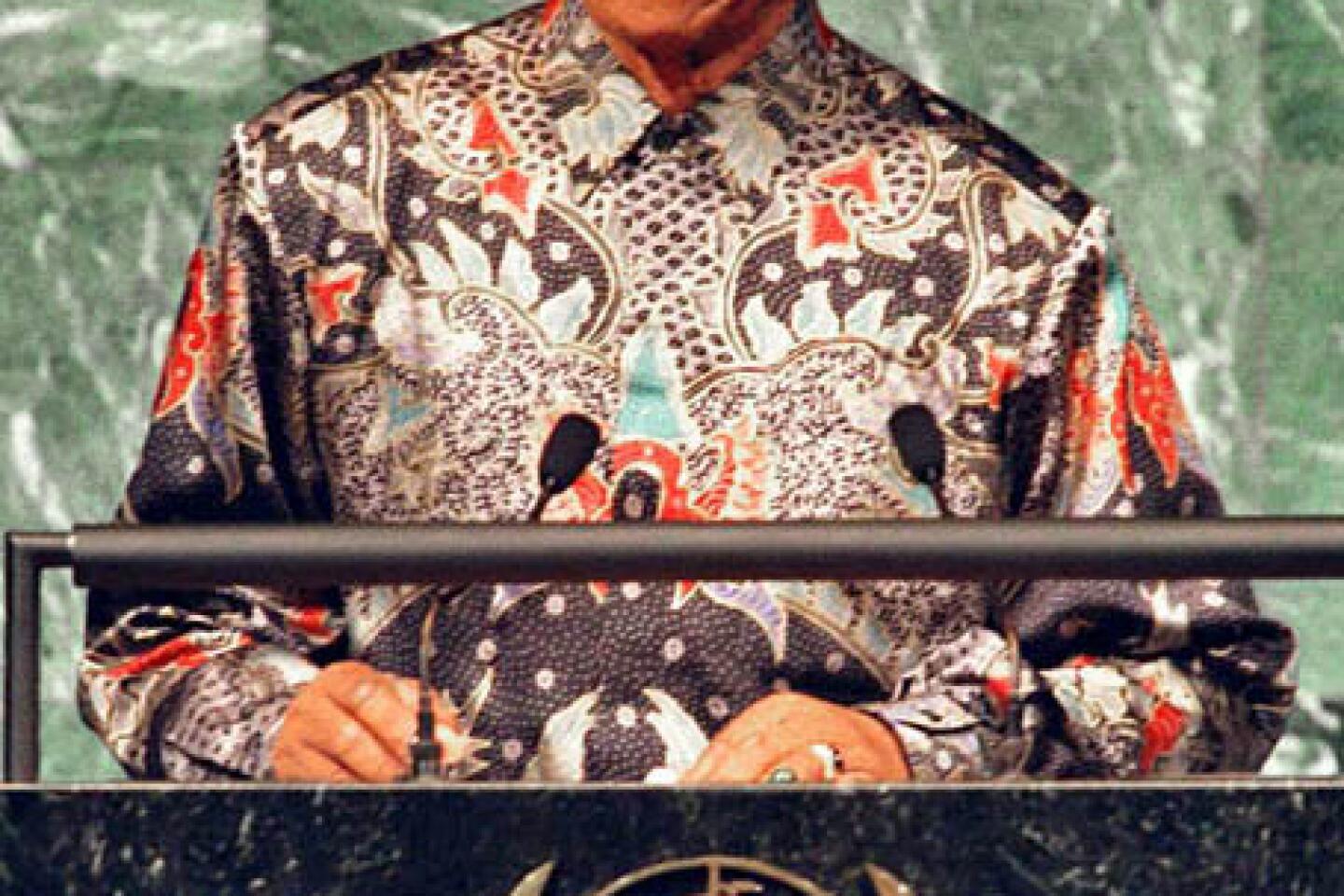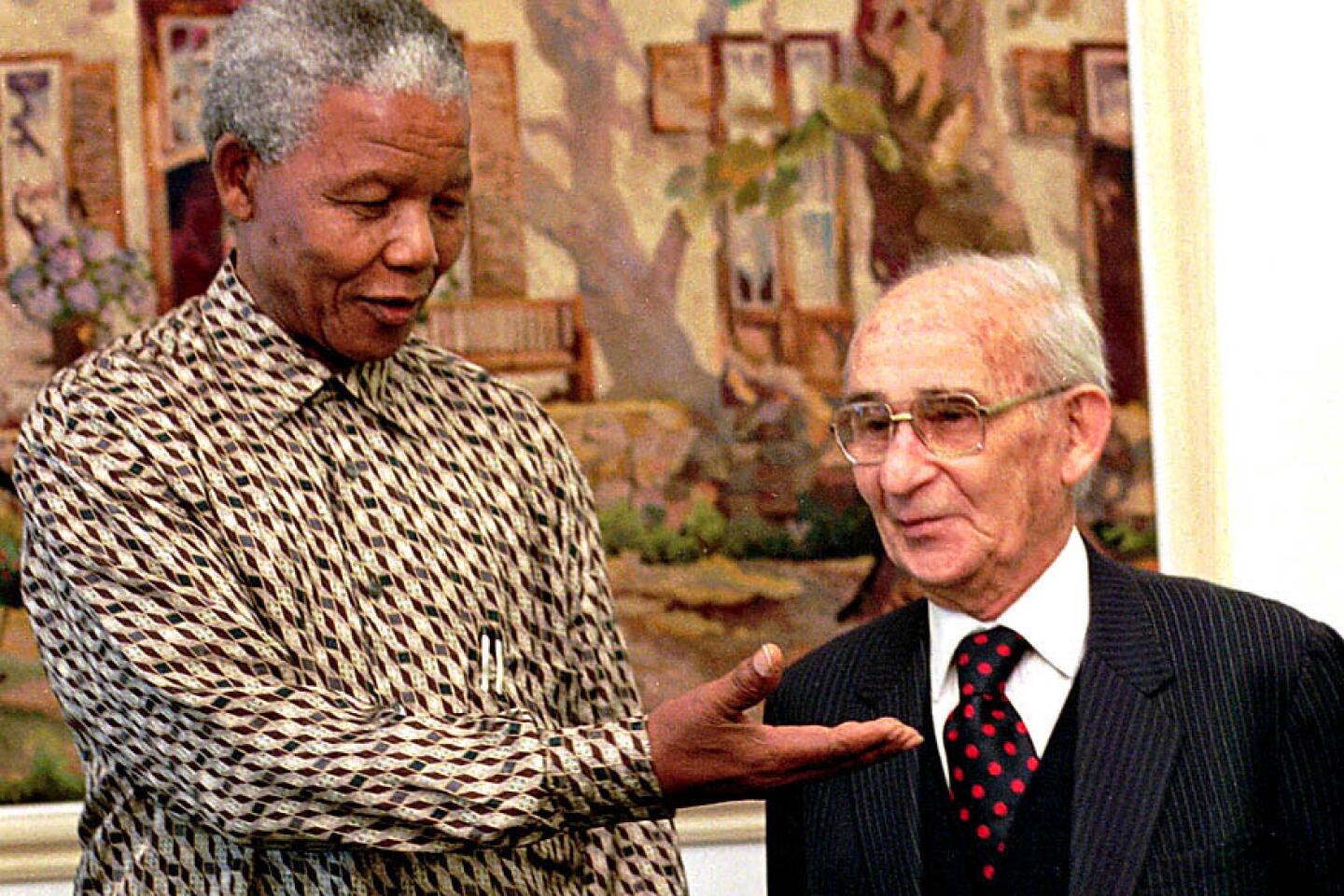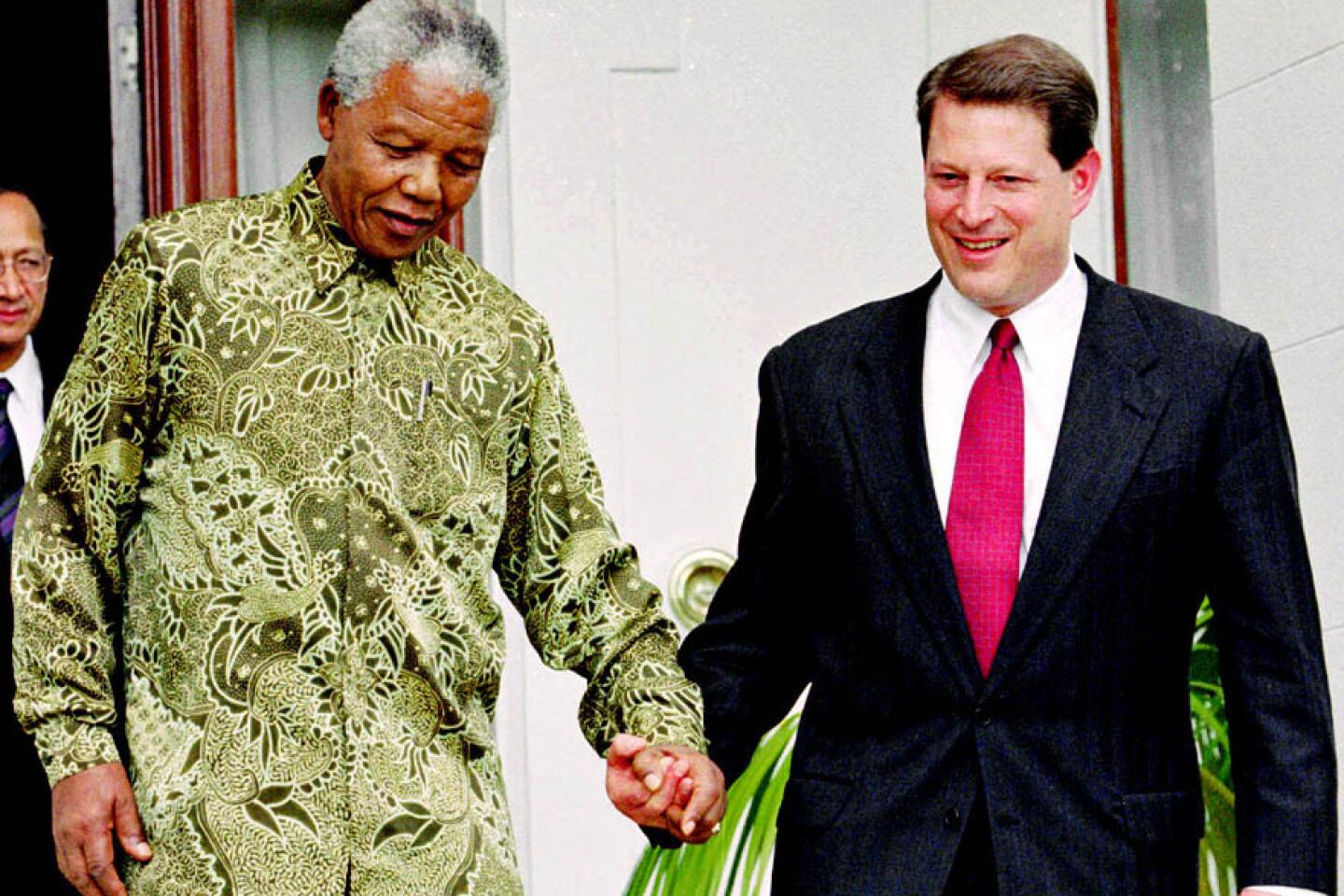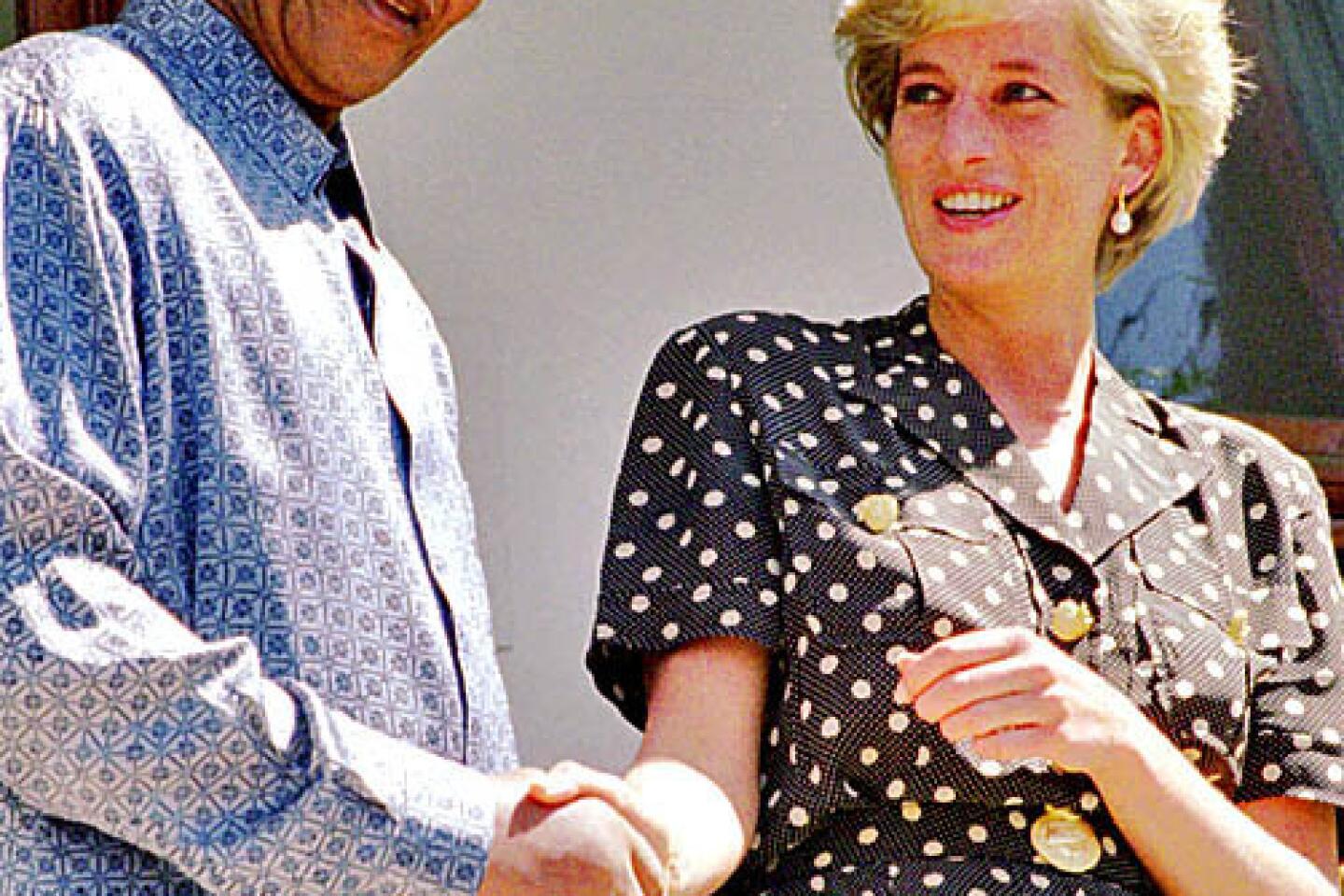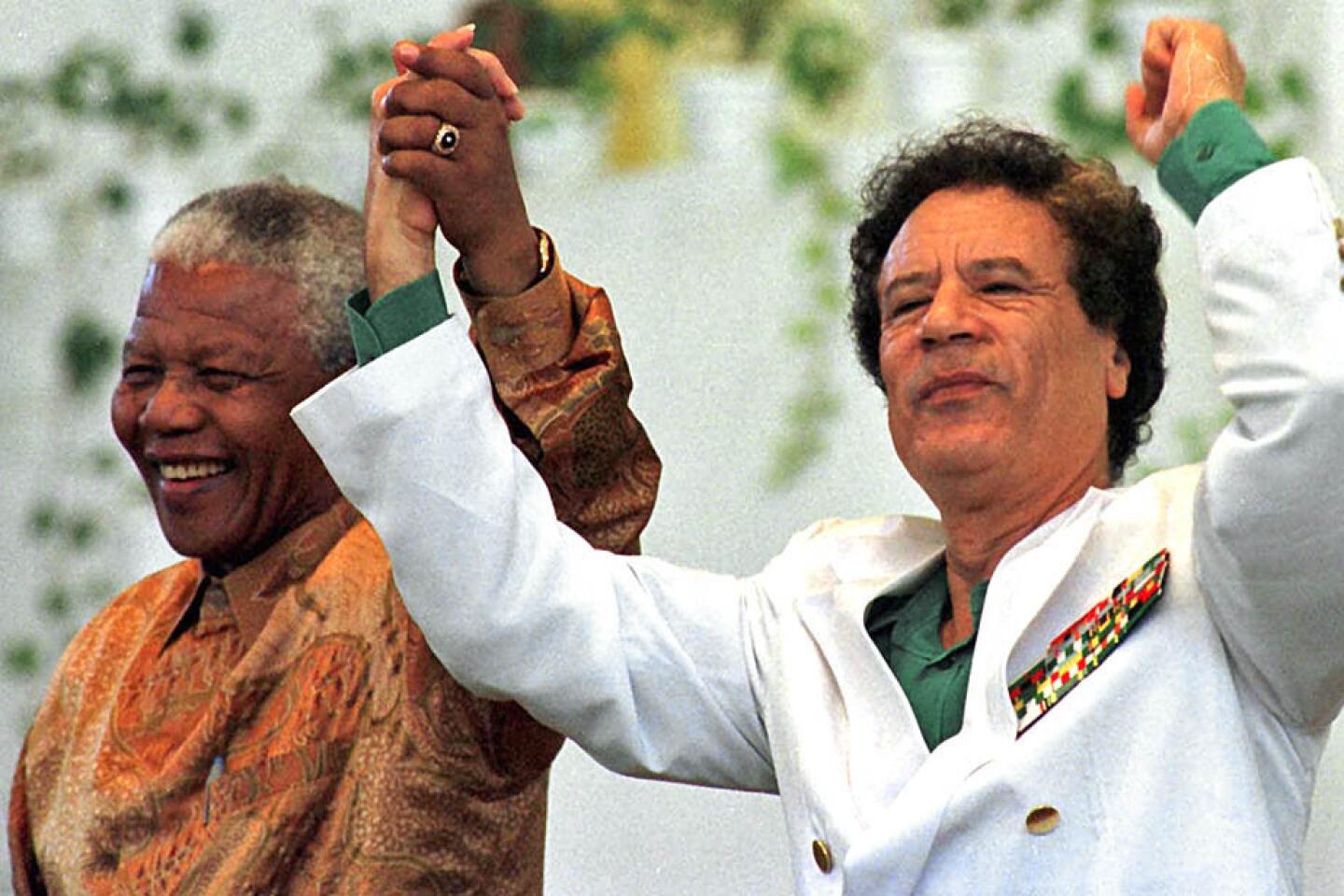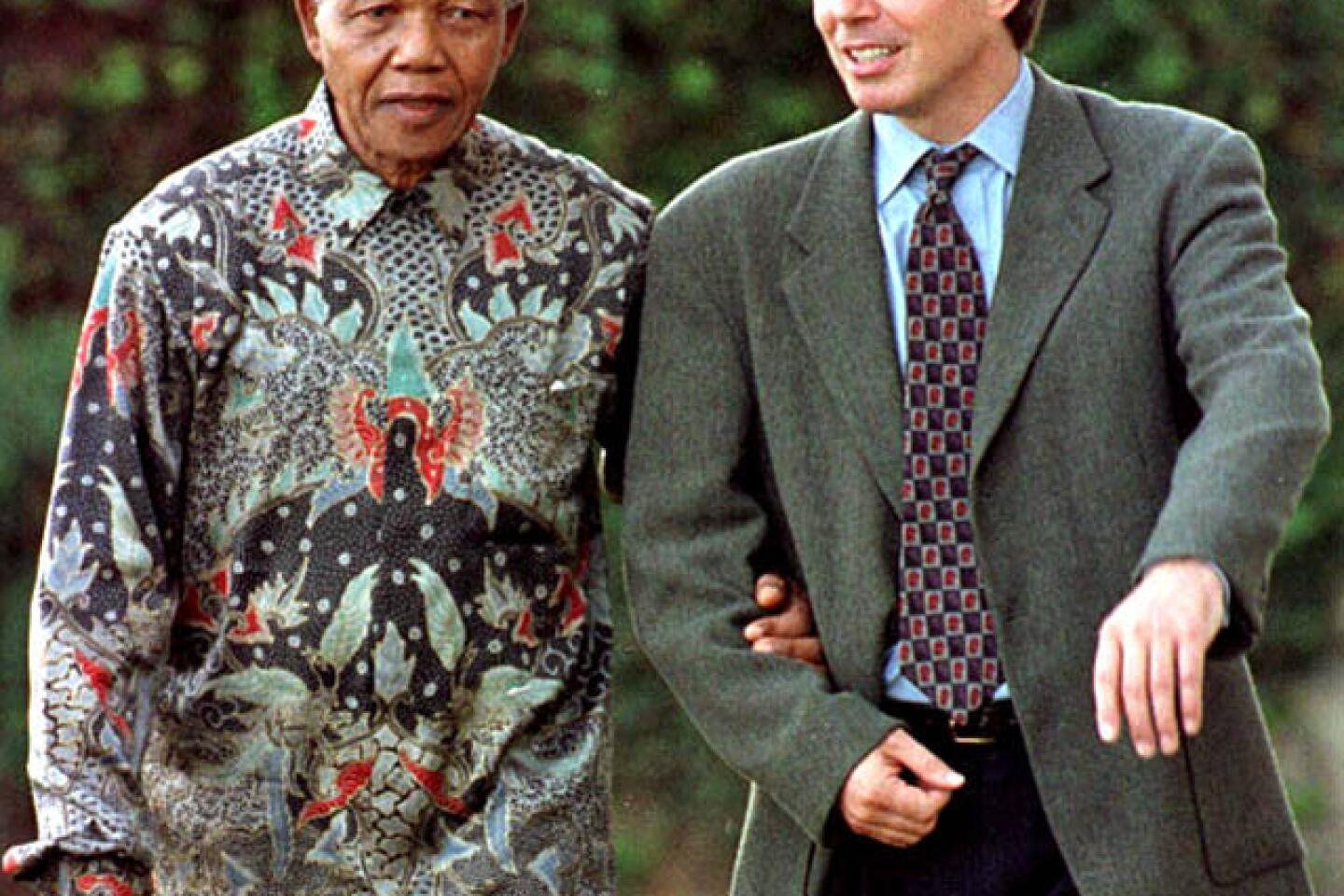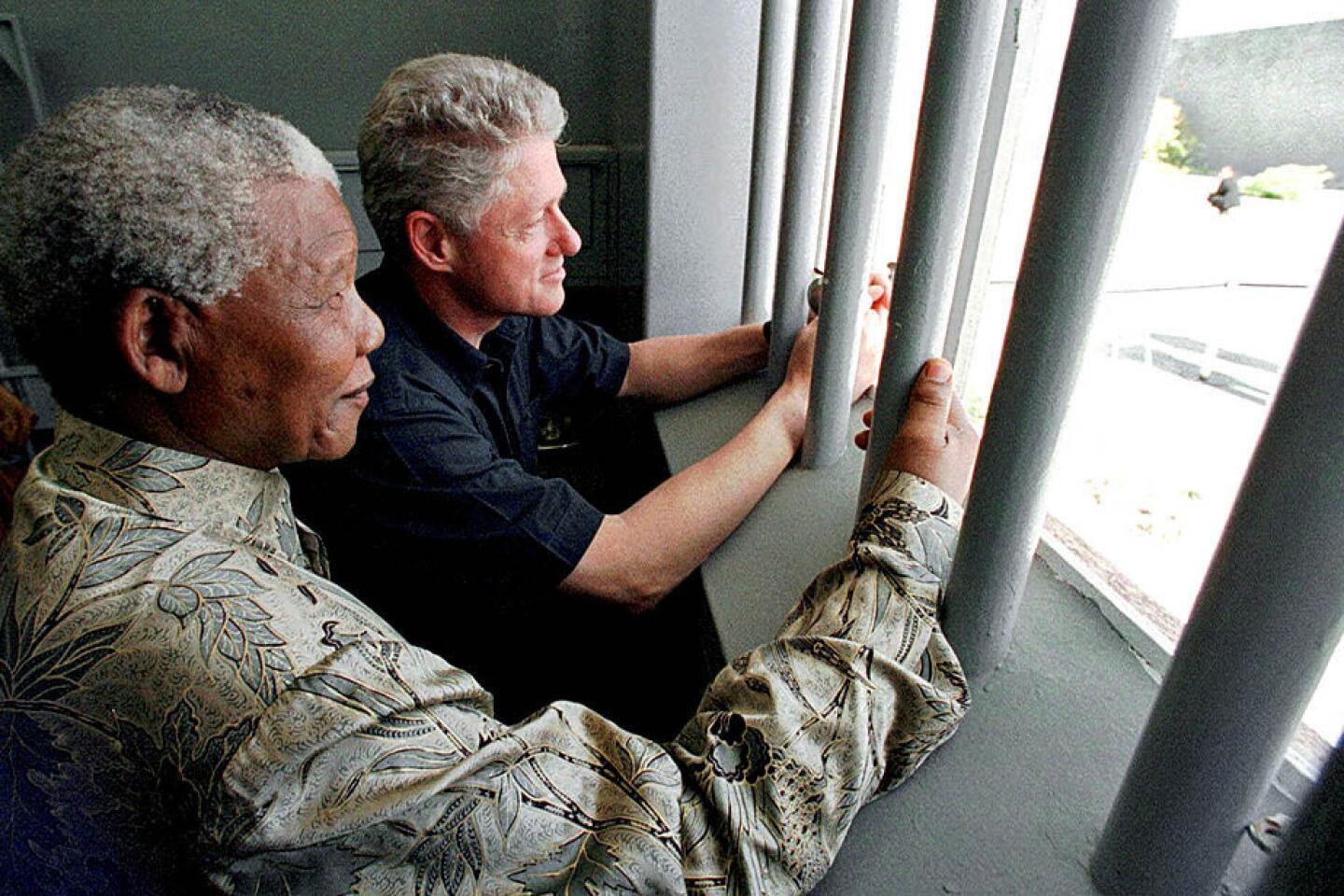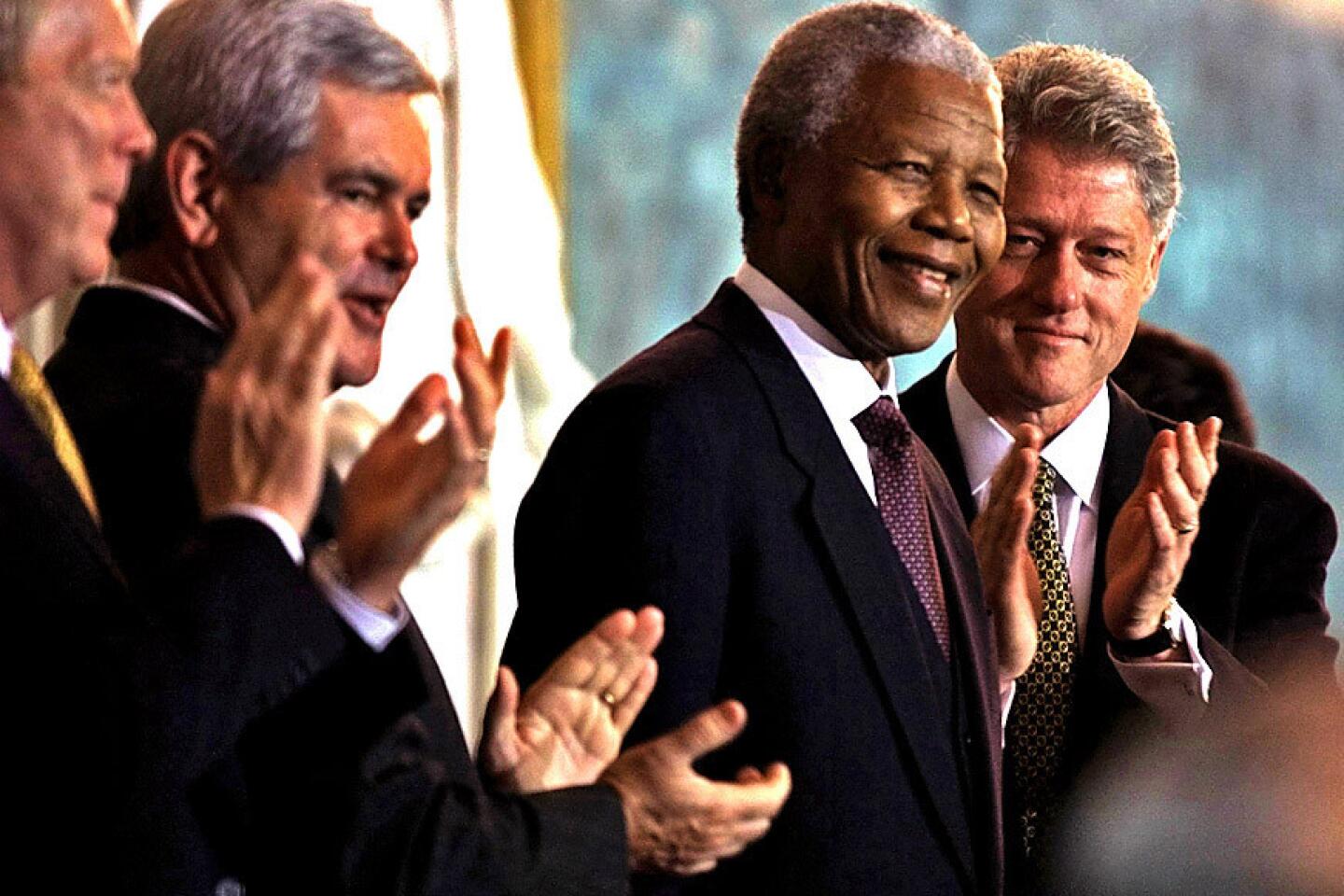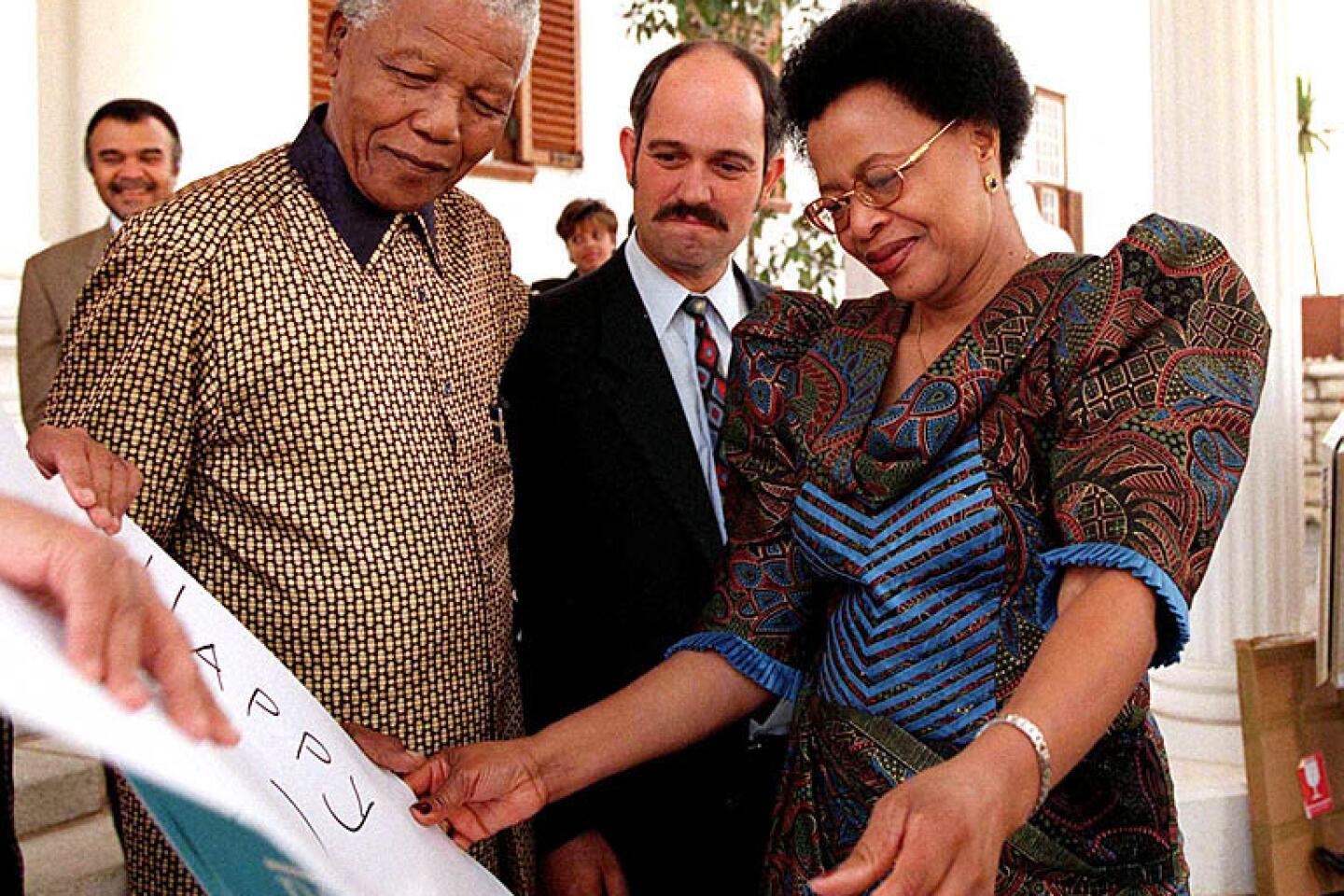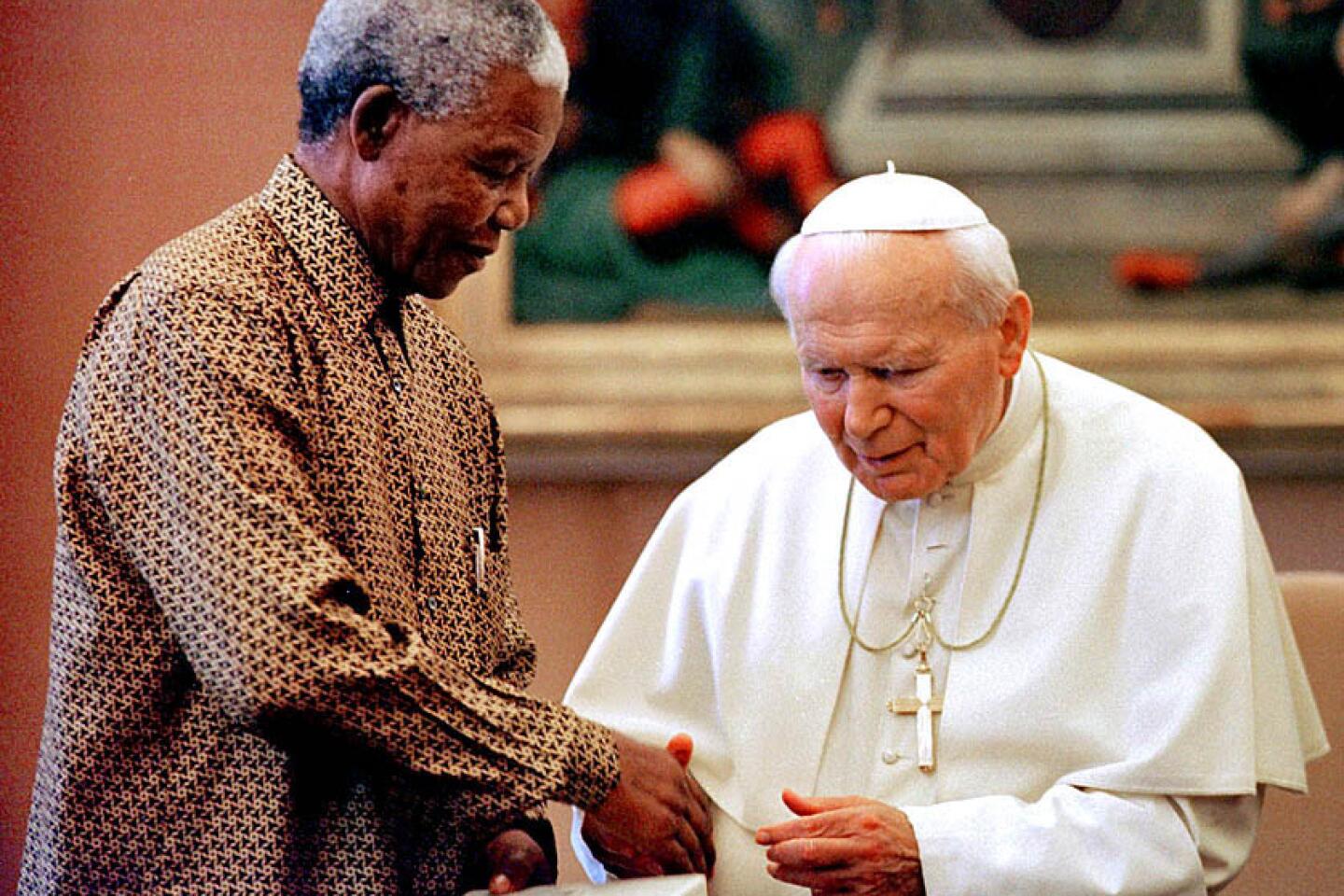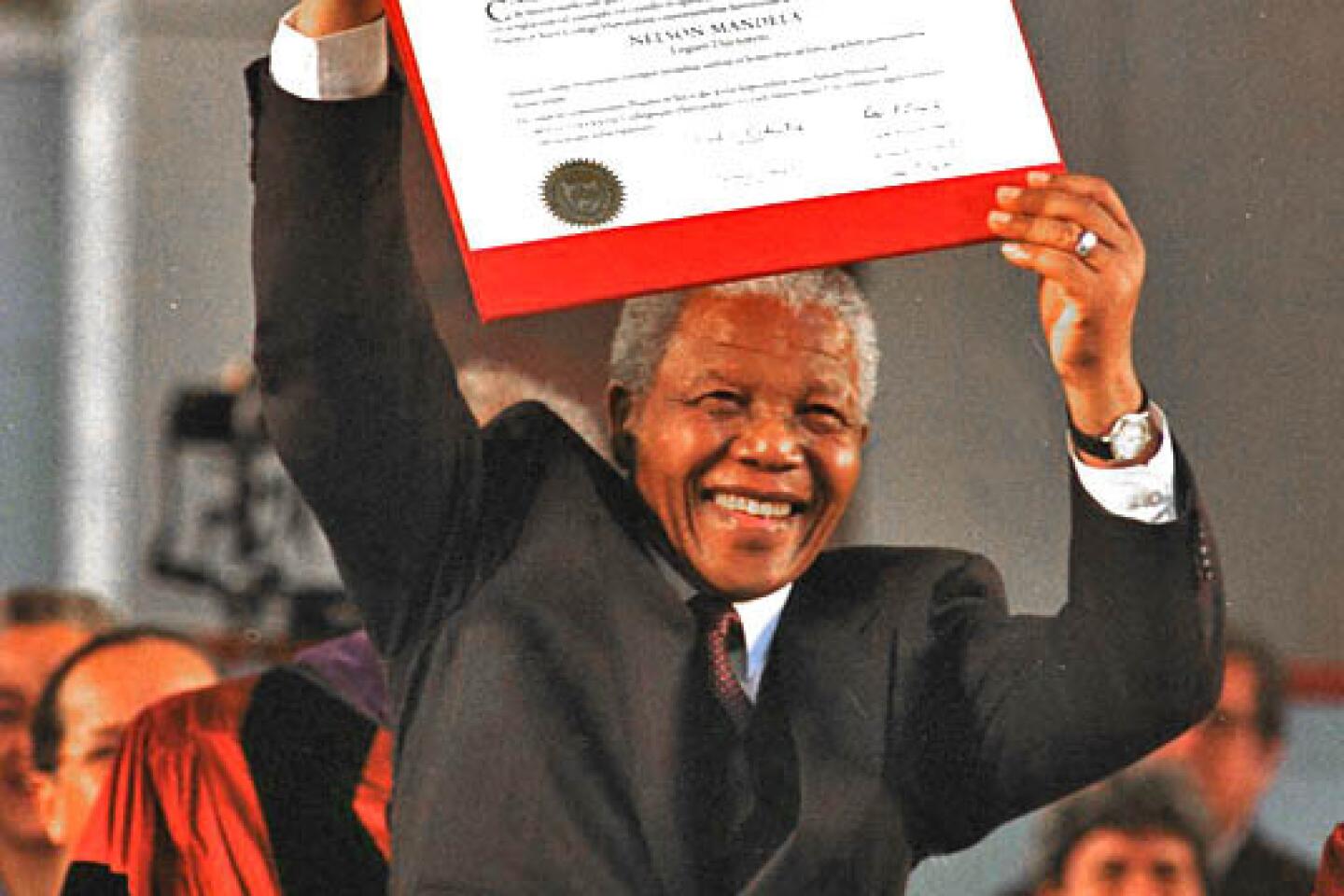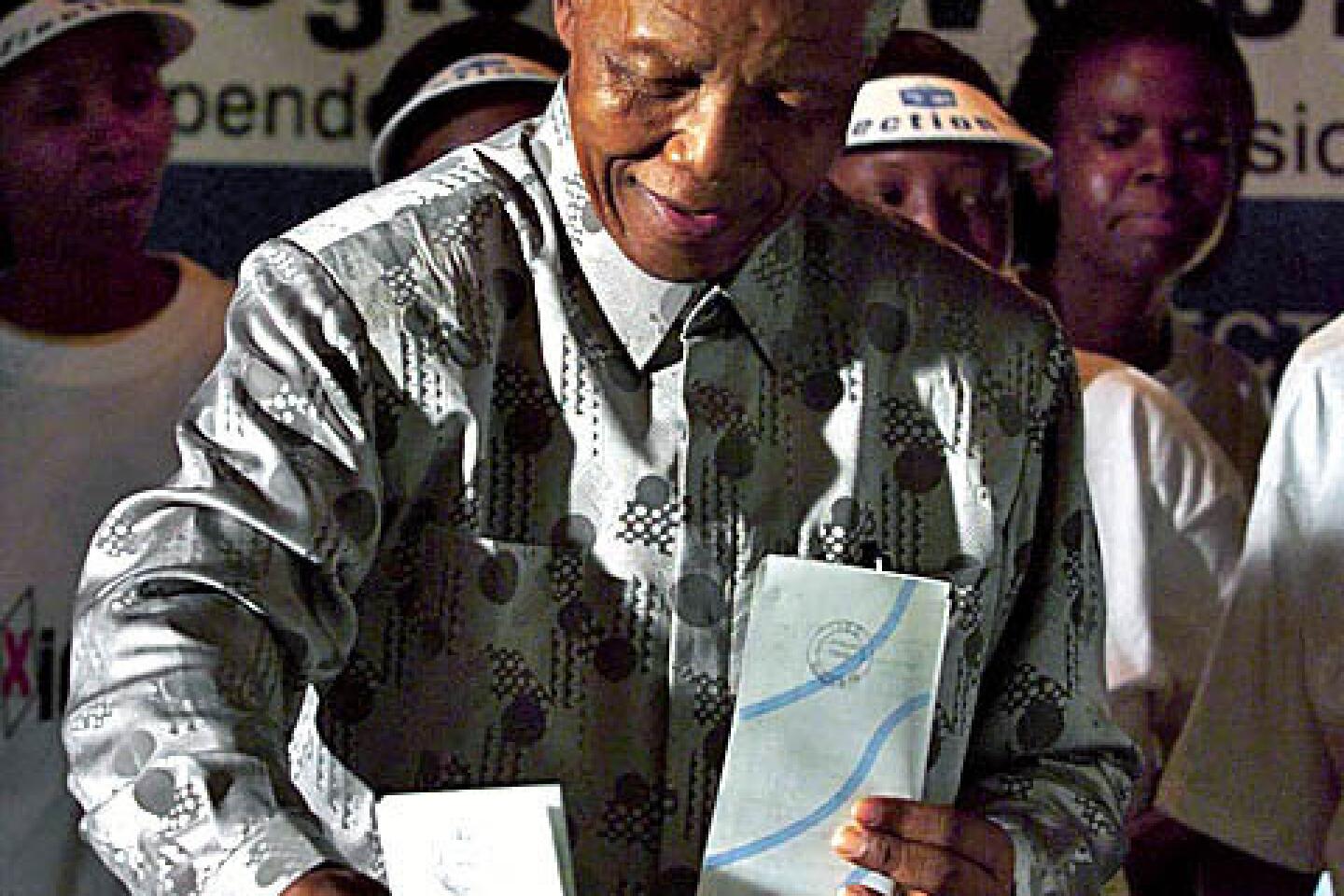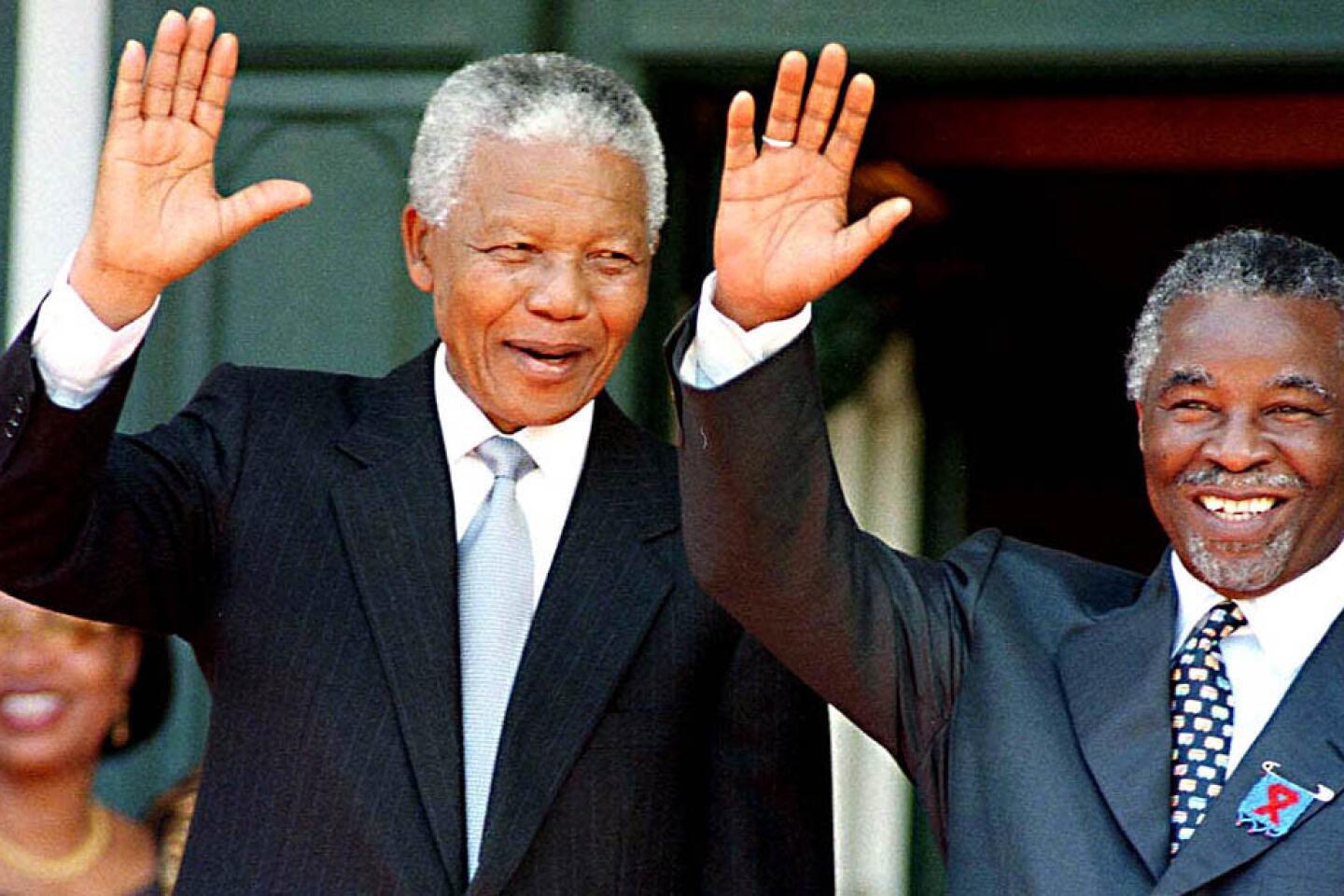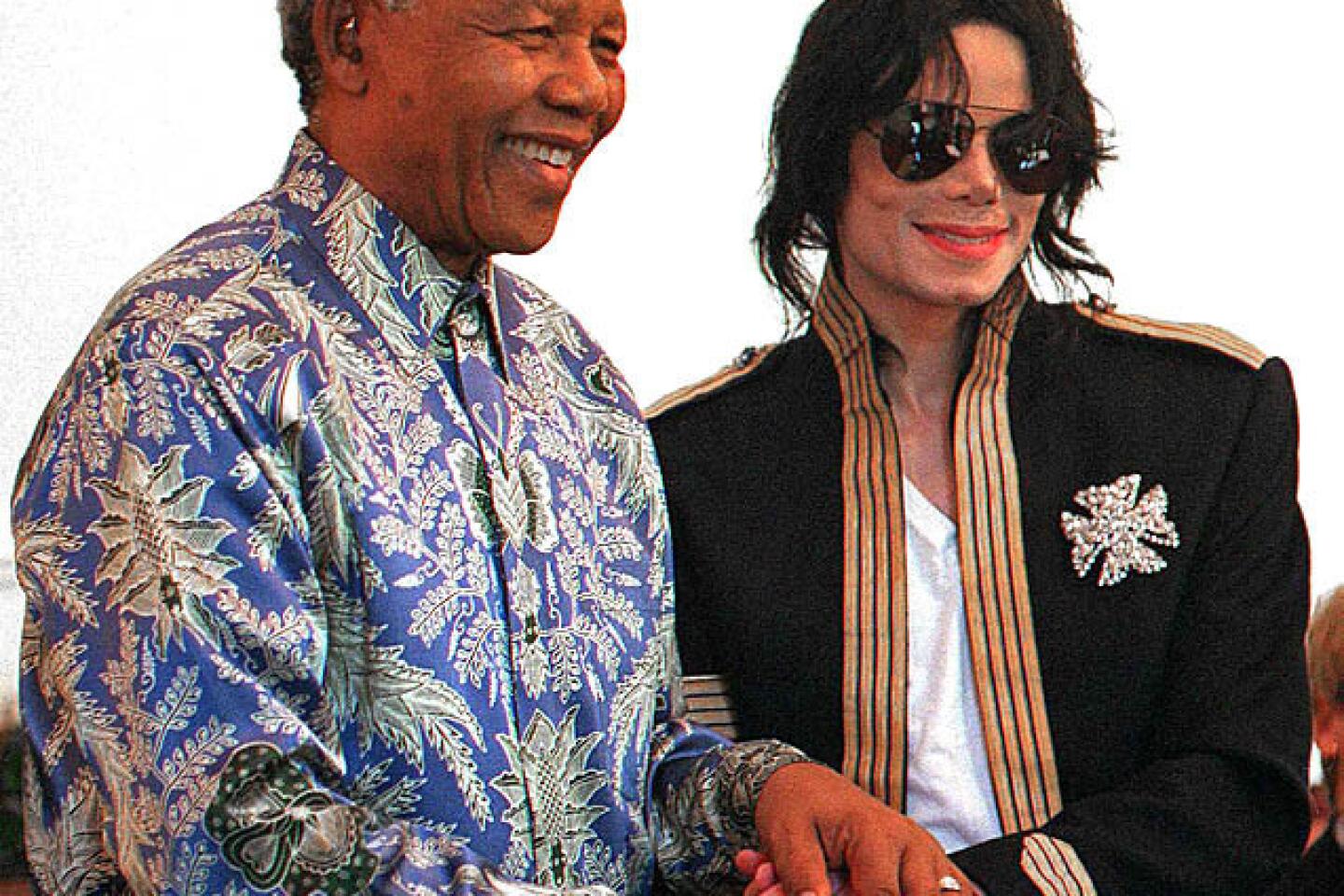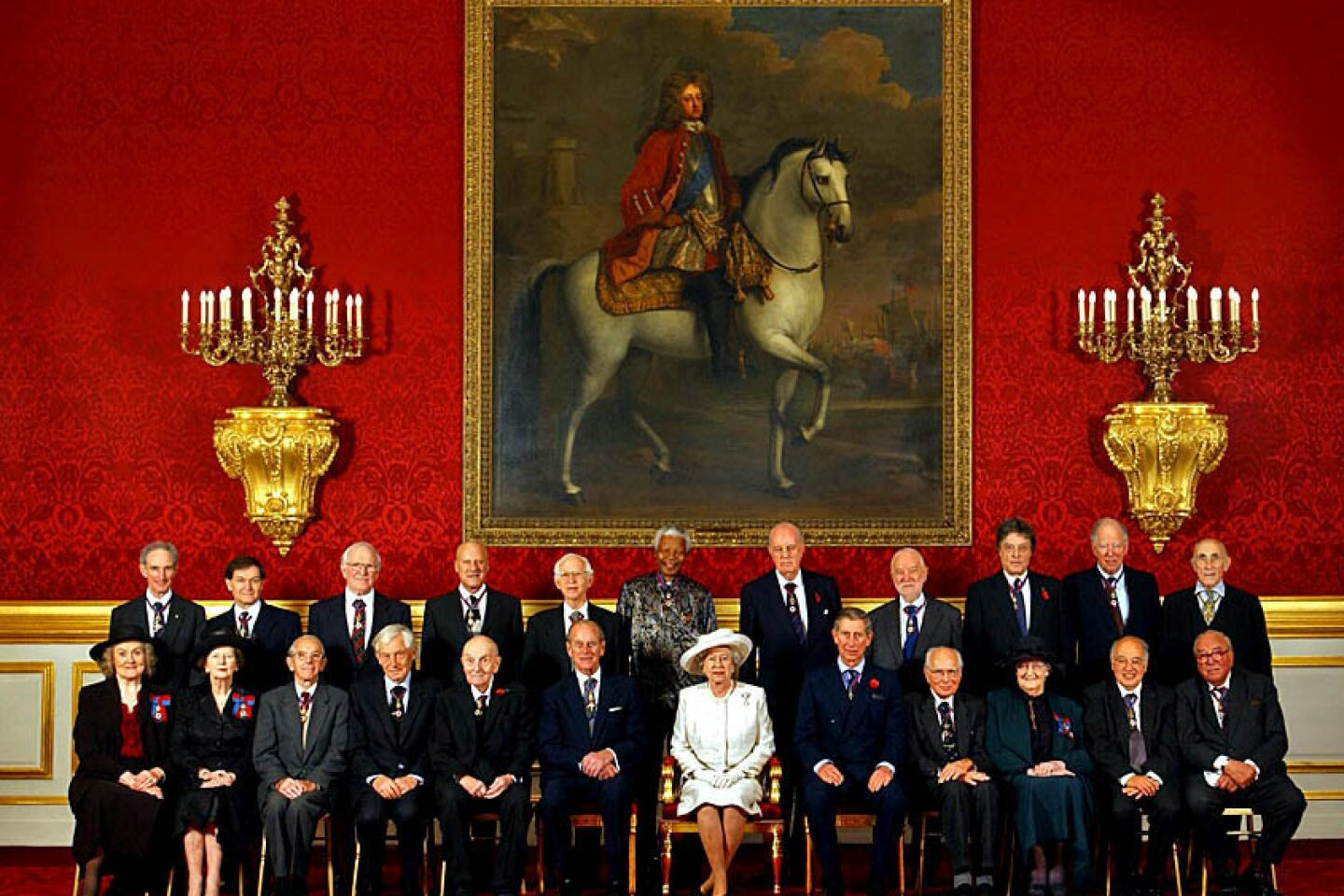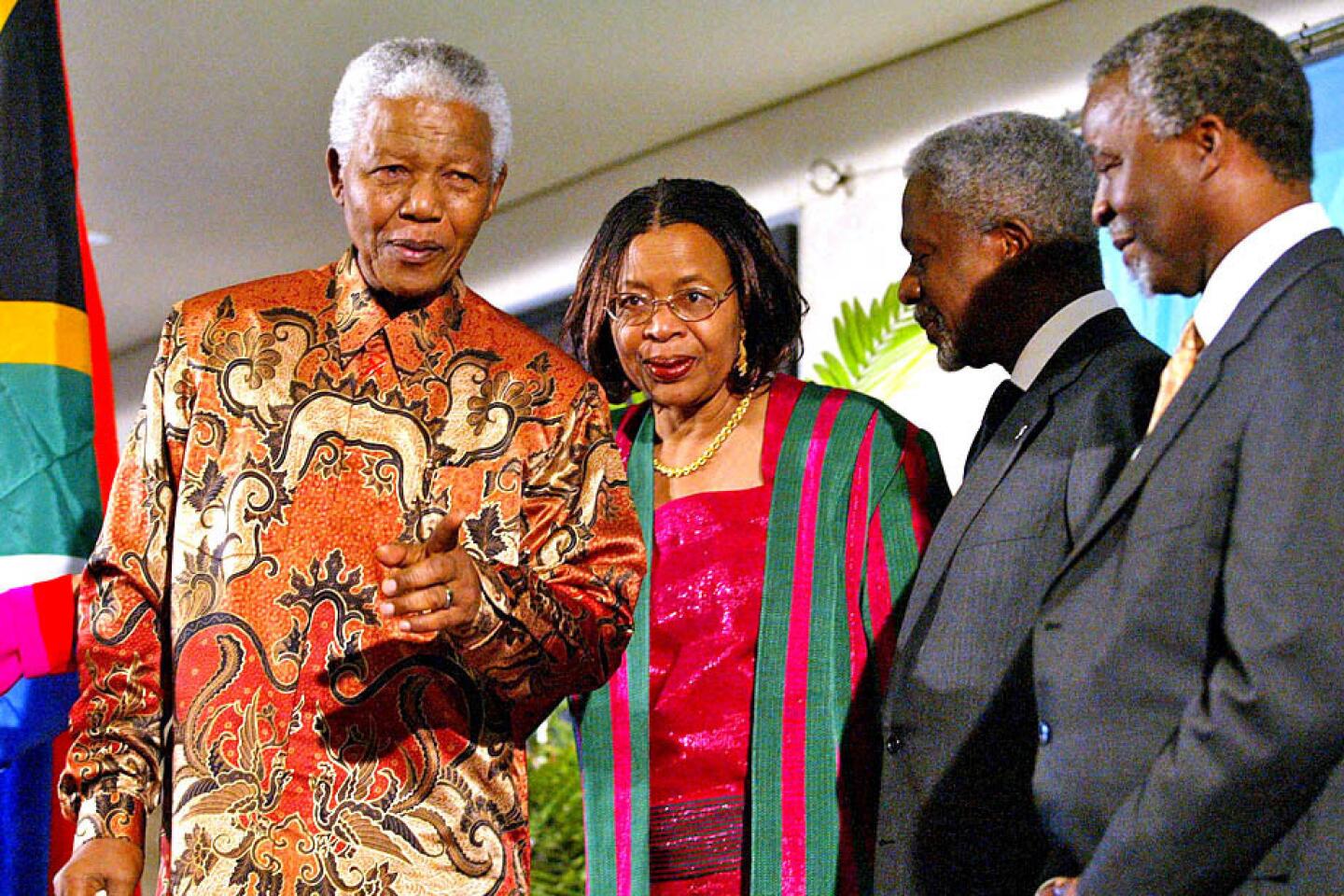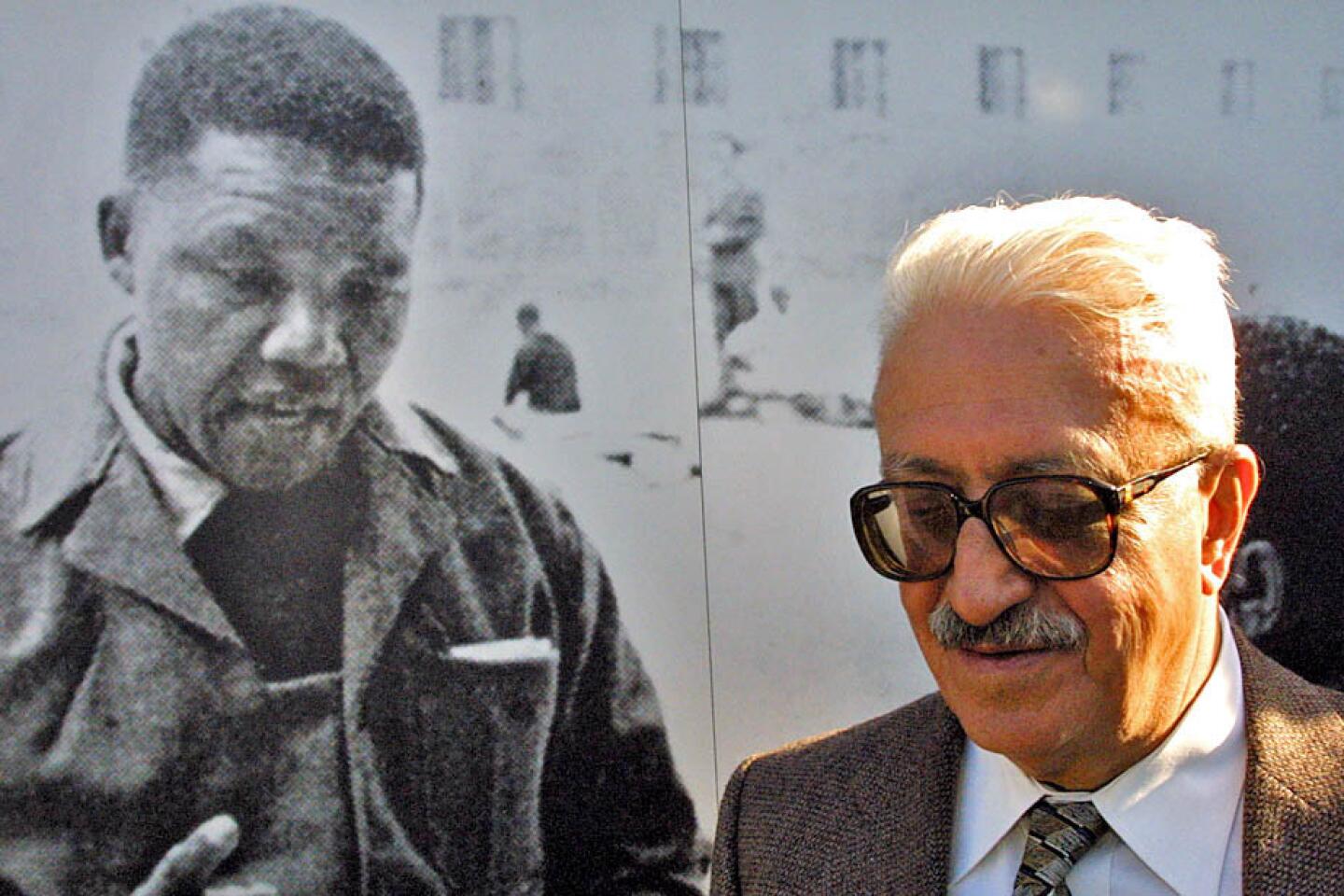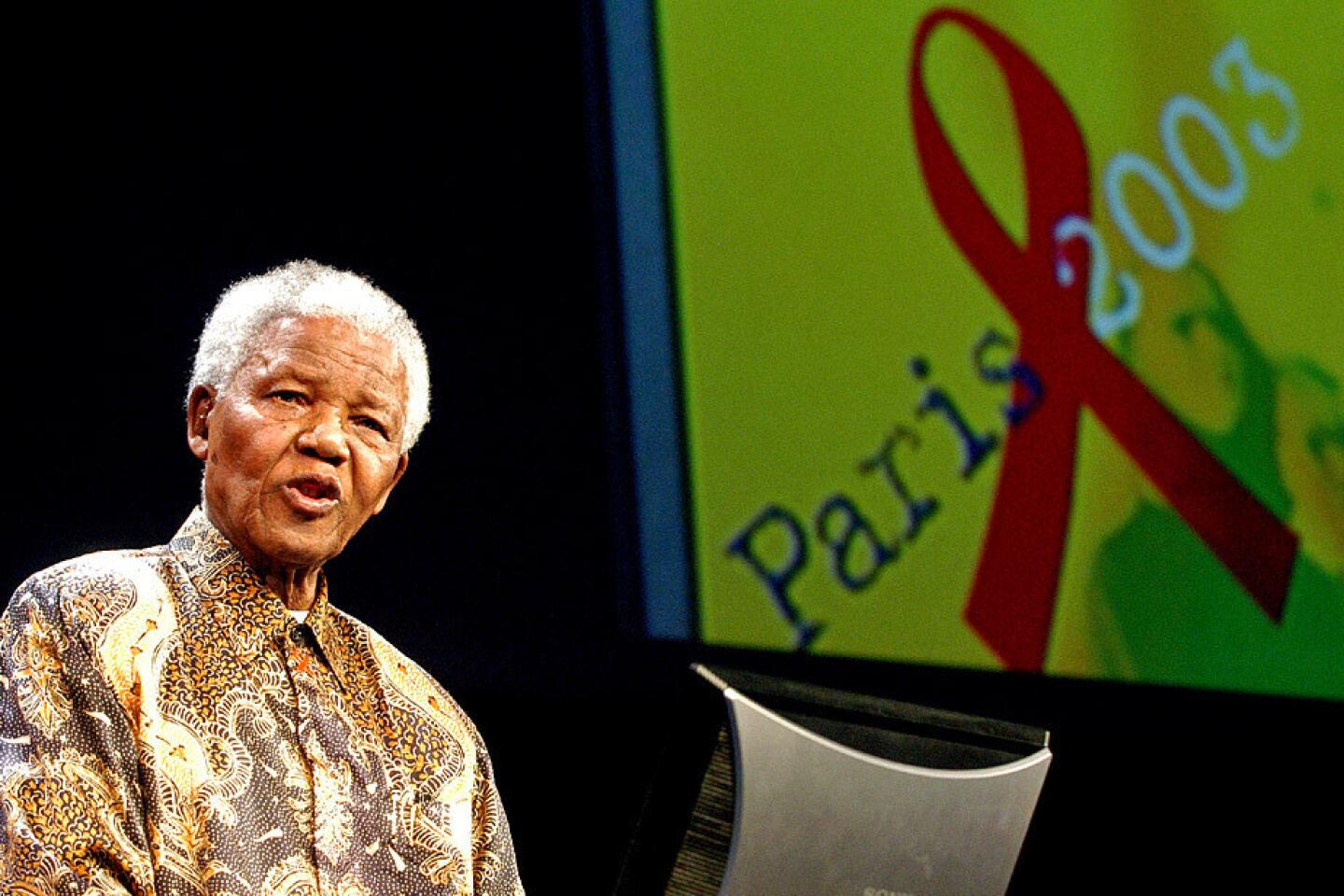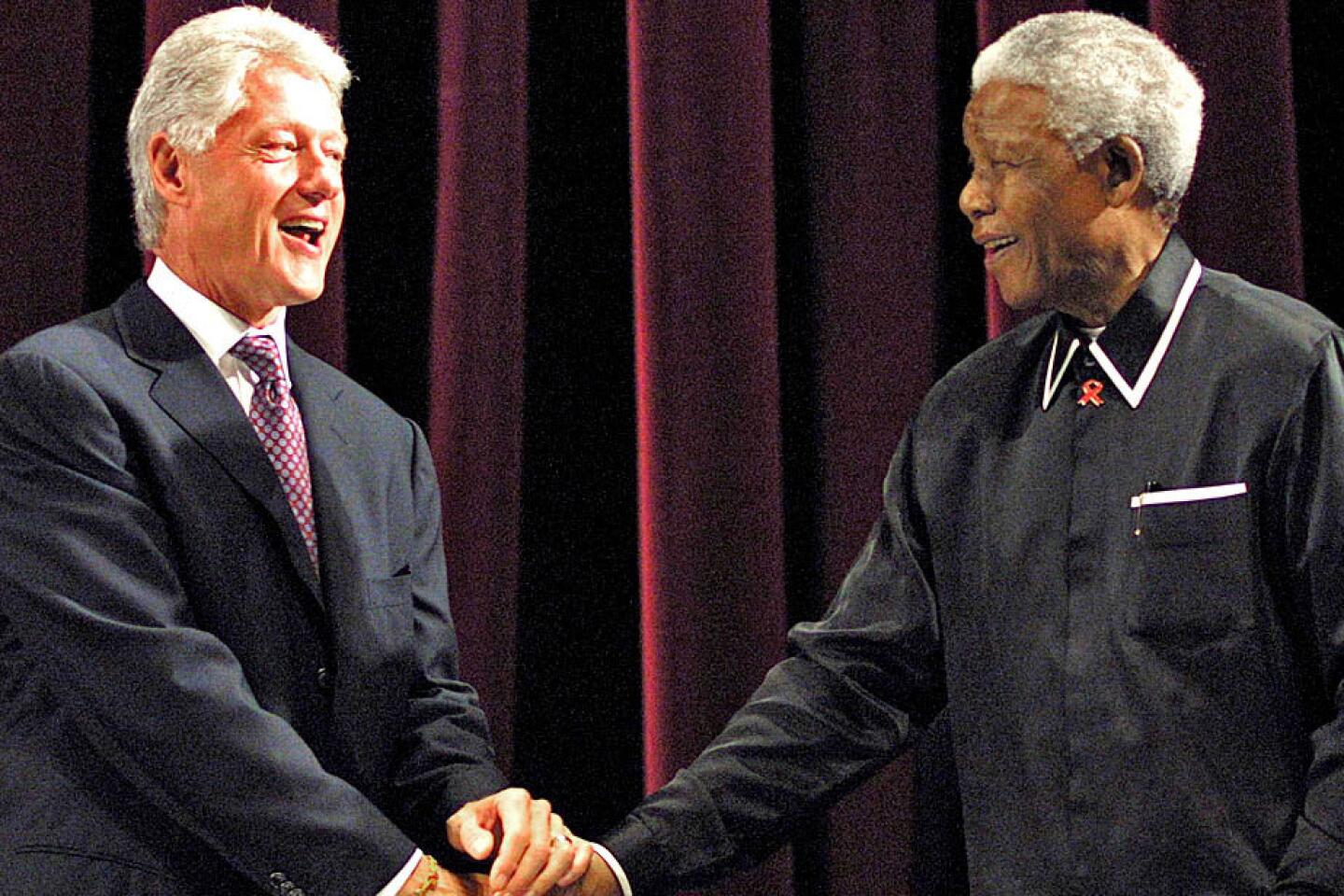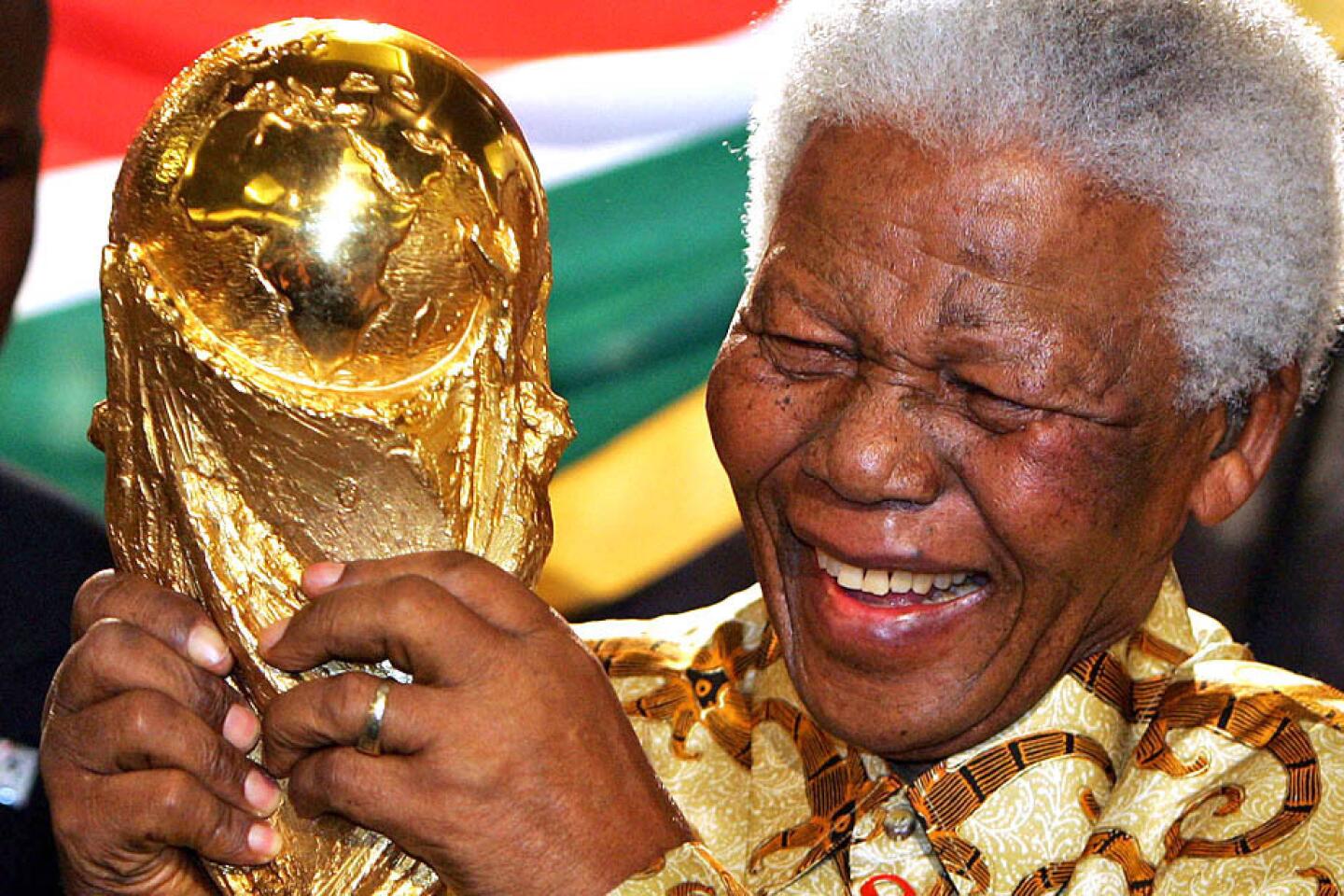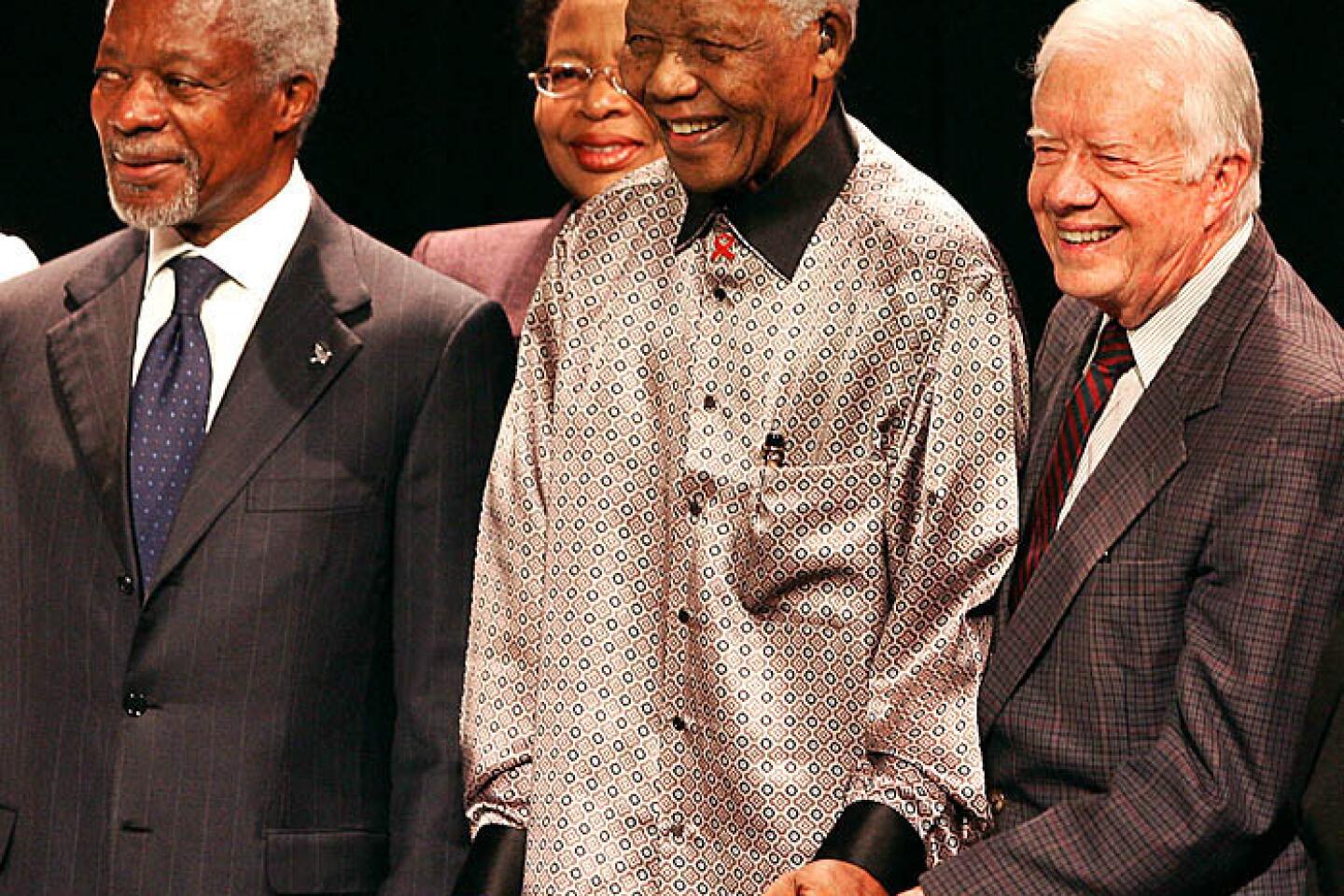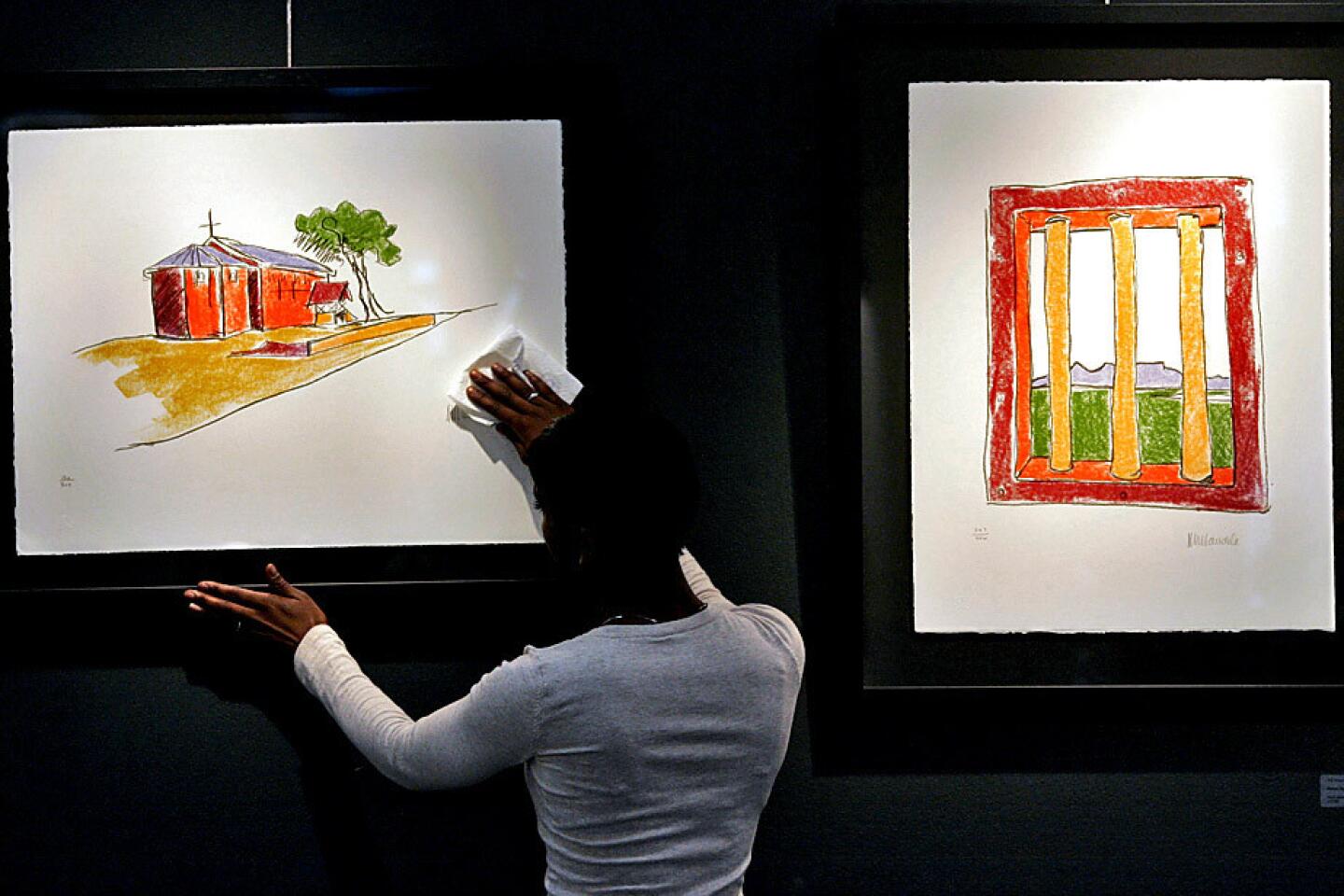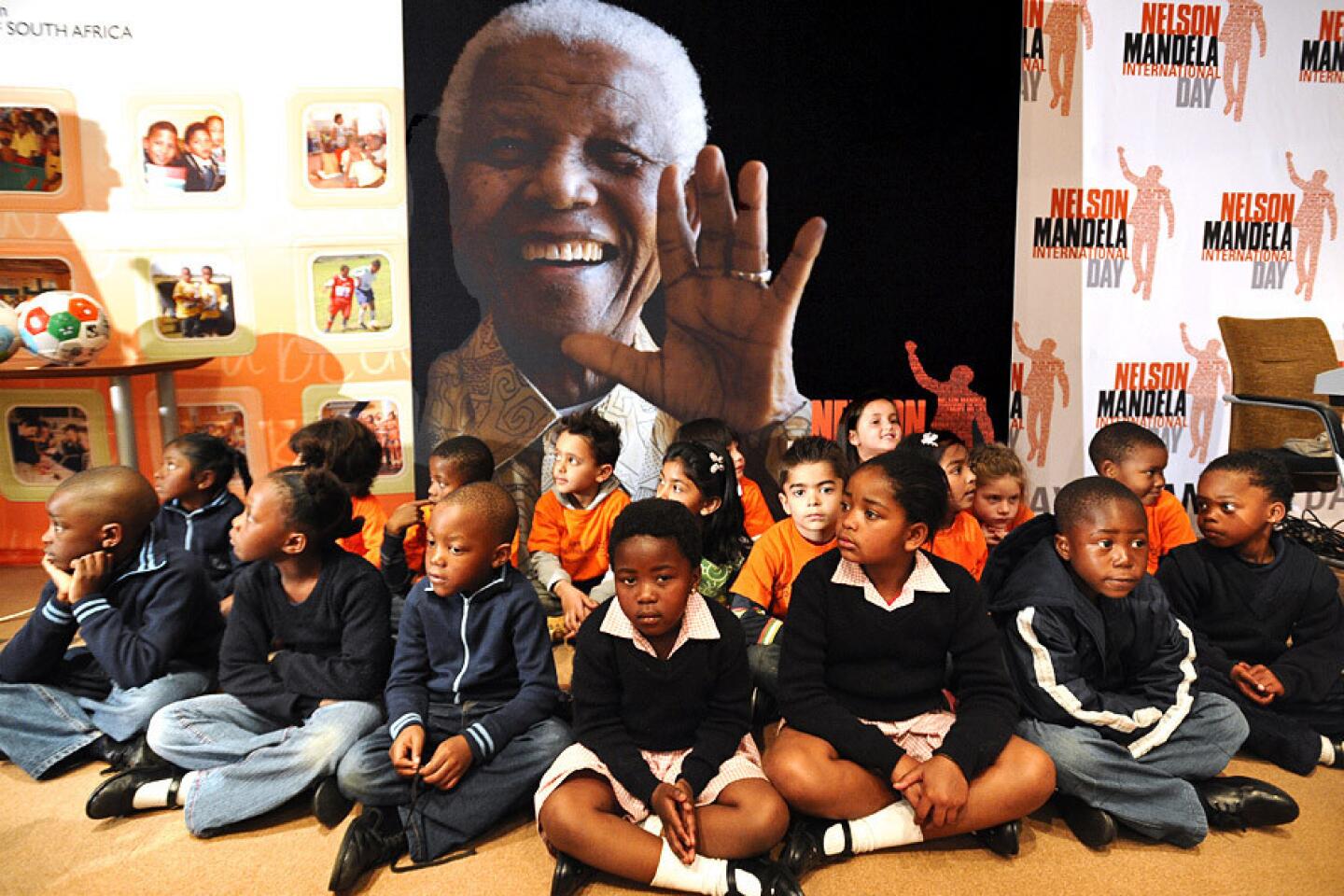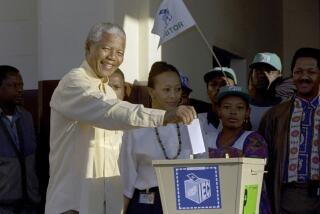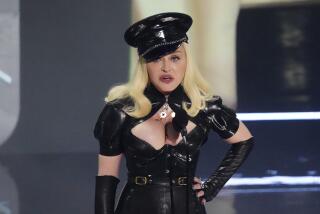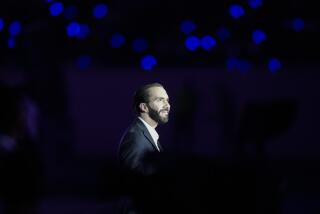Nelson Mandela wore the mantle of saint reluctantly
JOHANNESBURG, South Africa — An irritable man who got cross when he couldn’t have his favorite brand of mineral water? A fusser who obsessively folded his daily newspapers just so, who got annoyed if things weren’t lined up in their precise order? An aloof man who nonetheless flirted with any pretty young woman he met?
Could these accounts really tally with one of the world’s most beloved men, Nelson Mandela?
In his lifetime, Mandela always insisted that he wasn’t a saint, and by all accounts was quite irritated with the gilded view of him as an almost mystical figure.
PHOTOS: Nelson Mandela through the years
He even asked the Nelson Mandela Foundation to avoid using images of his face, which had become a kind of trademark, and focus on other things, such as his hands. He ordered them to make room for other people’s voices and memories. But the idolatry endured.
The myth had a price, said Verne Harris, project leader at the Nelson Mandela Center of Memory, a unit of the Nelson Mandela Foundation.
“In the process, all the complexities of this human being, all the flaws and elements of his characters and his life which don’t fit just get left out,” he said. “There’s a lot of ignorance. After all, he led an armed struggle. By many definitions he was a terrorist. That’s been washed away.”
Even though he rebelled against his status as an icon, Mandela was complicit in the narrative that was stripped of the warts and all, a myth-making process that had its origin in the anti-apartheid struggle.
Harris said the original draft of Mandela’s autobiography, “Long Walk to Freedom,” as put together by a collective of senior African National Congress figures at Robben Island prison, had a political objective: international support for the ANC and its vision.
“The ANC decided way back in the mid-1970s to use Mandela as the symbol of the struggle. The concept of the autobiography was very closely linked to the struggle,” Harris said. “In terms of the generation of text, this is the story of an individual but always planned in the context of collective leadership.”
FULL COVERAGE: Anti-apartheid icon Nelson Mandela dies
Politics called for a portrait of a leader without blemish.
Mandela wrote the first draft in his cell. It then went to senior ANC figures Walter Sisulu, Ahmed Kathrada and Mac Maharaj for successive editing before being smuggled out of prison. After his release in 1990 came more editing. The publishers tried to coax more personal details from Mandela, which he resisted. And he insisted on expunging some elements, like a stray remark in which he’d called someone haughty. In his old-fashioned and rather prim way, he felt the remark inappropriate.
“It is already growing more difficult to go beyond the brittle shell of the official biography, to see Mandela’s imperfections and contradictions — the details that make him human,” Adam Roberts, a former Economist correspondent, wrote at Mandela’s 90th birthday. “Once he has received his state funeral, it will be harder still. As with Mahatma Gandhi or Mother Teresa, the myth will take over and the person will become a mere icon, hollowed out and revered, but little understood.”
In the end, Mandela realized the book played a role in deifying him. The 2010 book “Conversations With Myself,” put together by the Nelson Mandela Center of Memory, took a hammer to the image.
It even includes his comments on allegations that he had beaten his first wife, Evelyn Mase. Mandela said he had wrenched her arm to make her drop the bar she had picked up to attack him, in what clearly was a very unhappy marriage. After his release from prison, she would accuse him of adultery.
In his Economist portrait of Mandela, Roberts mined the small, mundane areas, looking for the flaws that made Mandela real.
“Mandela runs on self-control, structuring his life down to the smallest details. Speak to those who know Mandela best, who are least in awe of the myth, and they make it clear their friend has some less attractive qualities. A common gripe is that he is aloof.
“Mandela can be pernickety [sic],” he wrote. “He insists on carbonated water and complains if he gets the wrong brand.”
He could be dogmatic and stubborn, said his last wife, Graca Machel, interviewed by Al Jazeera television in 2008. “He also gets angry. He is somehow stubborn. You need to convince him. You have to have a very good argument to make him change his mind. And so he has weaknesses.
“He made mistakes in life, towards his family, his friends. He made mistakes even in political decisions.”
In “After Mandela,” a 2009 book about the recent failings of the African National Congress, author Alec Russell told of Mandela’s “masterful” political seduction technique.
“I was one of many correspondents who were unashamedly dazzled by Mandela when he was in office,” he wrote. “Small groups of us would gather at his Johannesburg home for impromptu press conferences when we would sit at his feet, acolytes before a sage.”
Mandela, he wrote, was brilliant at exploiting the world’s infatuation with him. He’d call world leaders, seeking support for a project or position, or even to raise funds for the ANC.
“The otherworldly image of Mandela may have been what South Africa and the world wanted to believe, but great humanitarian as he was, he was always foremost a politician. Reconciliation was not a spontaneous miracle, as some like to imagine, emanating from the magnificence of Mandela’s soul. Rather, the seduction of the Afrikaners was carefully plotted in Mandela’s cell, as a way to win and then retain power.”
As Russell and others have argued, there were some serious blemishes: Mandela’s autocratic streak, his tendency to go it alone when he wanted to without consulting colleagues, and his loyalty to ANC ministers who performed badly, the latter which set the stage for the ANC’s progression into a group of complacent and unaccountable elite that many of its leaders were to become.
But there seemed no end to the world’s obsession with Mandela.
“What more do we want of him?” fellow Nobel laureate and retired Anglican Archbishop Desmond Tutu said in amazement in early 2011 as journalists thronged outside a hospital where Mandela was being treated for a severe cold, wondering why people clung so to the myth.
“I think it’s a difficult question to answer,” Harris said. “I think it’s what he represents in the popular mind: the way that he suffered so much and forgave his enemies. It’s a kind of redemption story, which is kind of fundamental to humanity, dealing with huge challenges.
“I think part of our job has been to restore the complexity of this human being.”
ALSO:
Nelson Mandela, South African crusader for racial equality, dies at 95
Zuma urges South Africans to realize Nelson Mandela’s vision of unity
Obama says Mandela ‘achieved more than could be expected of any man’
Twitter: @latimesdixon
More to Read
Sign up for Essential California
The most important California stories and recommendations in your inbox every morning.
You may occasionally receive promotional content from the Los Angeles Times.
